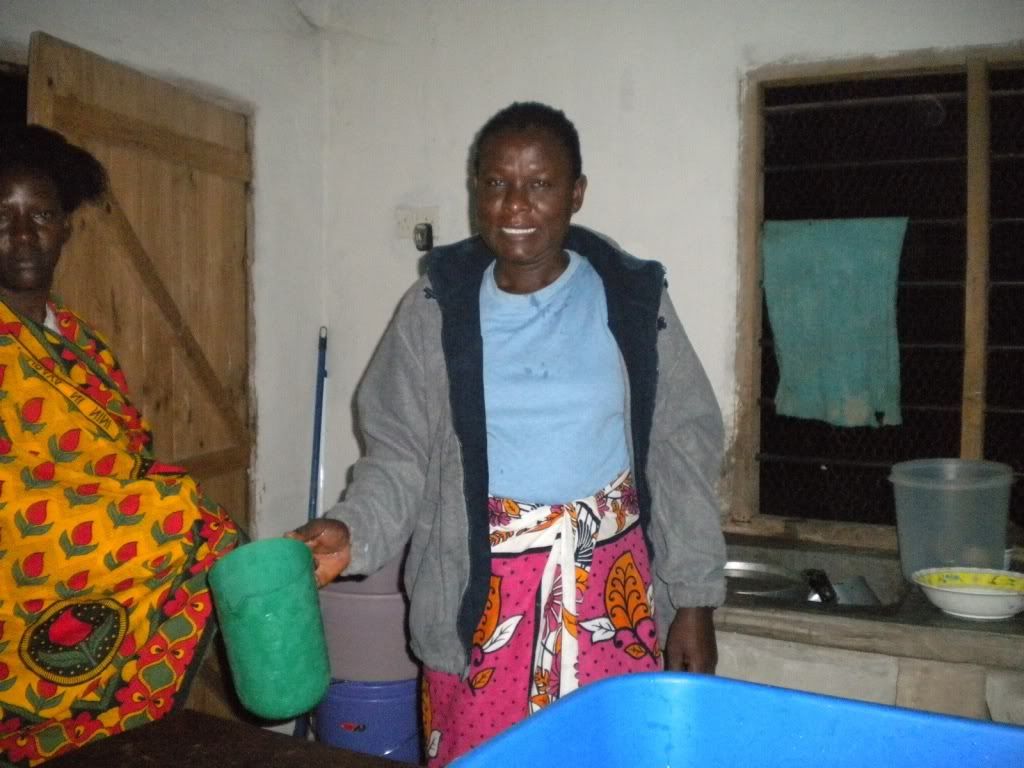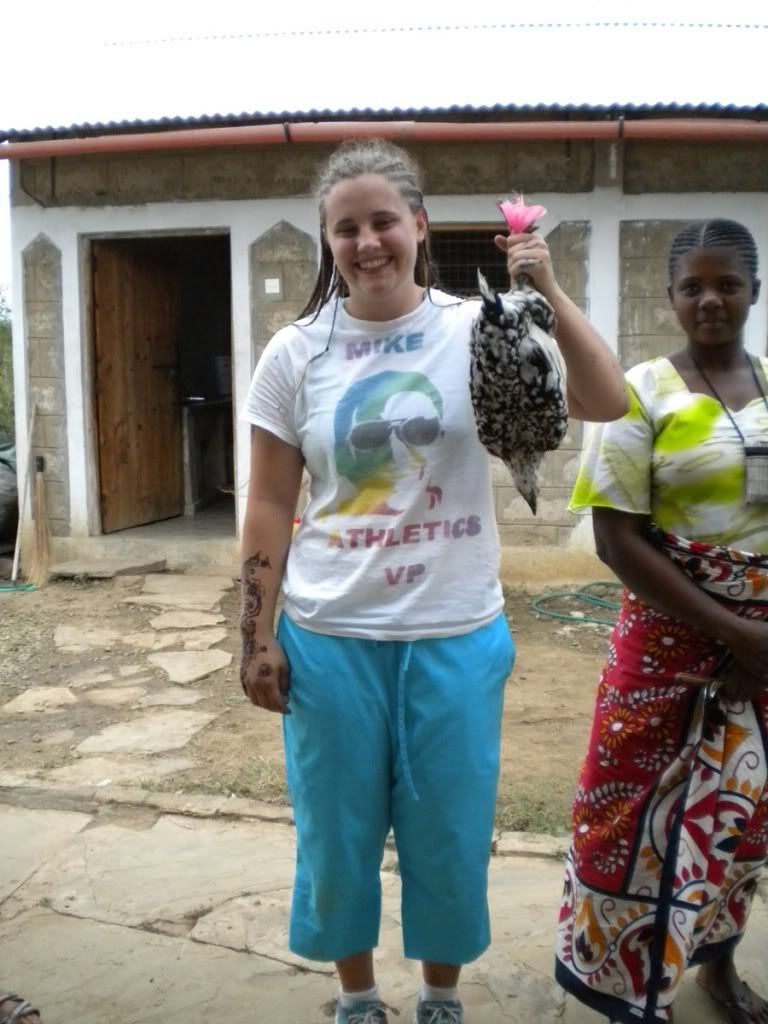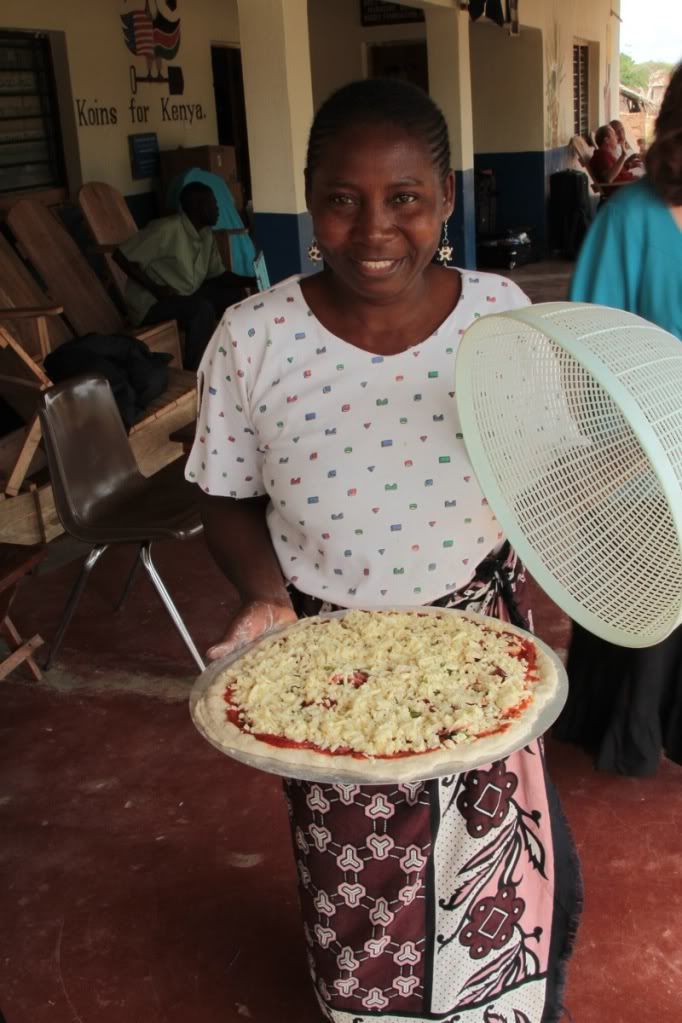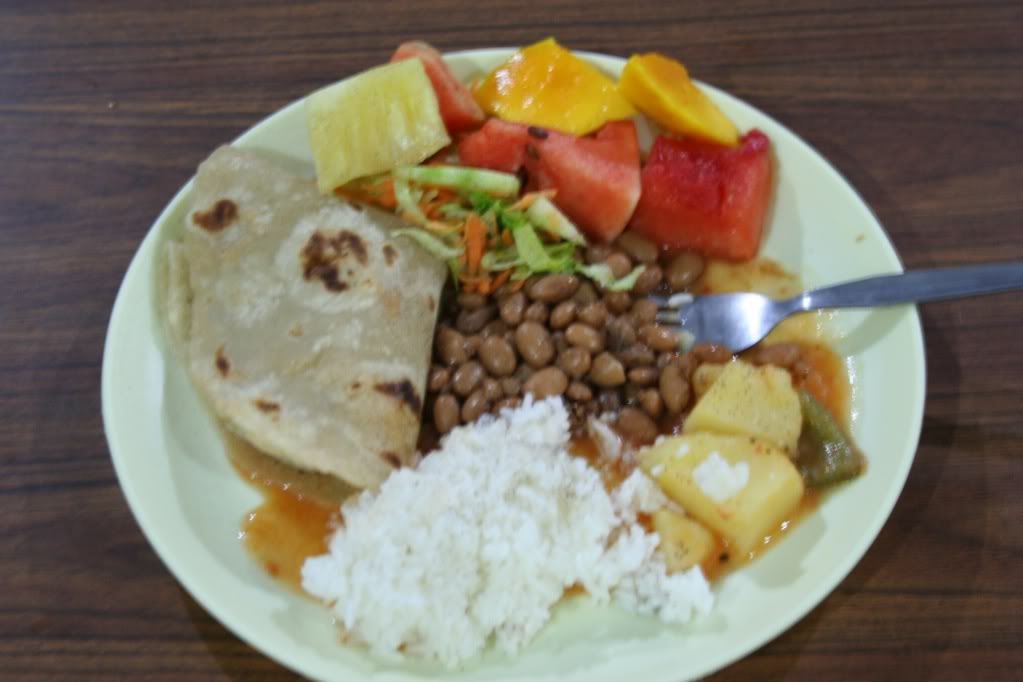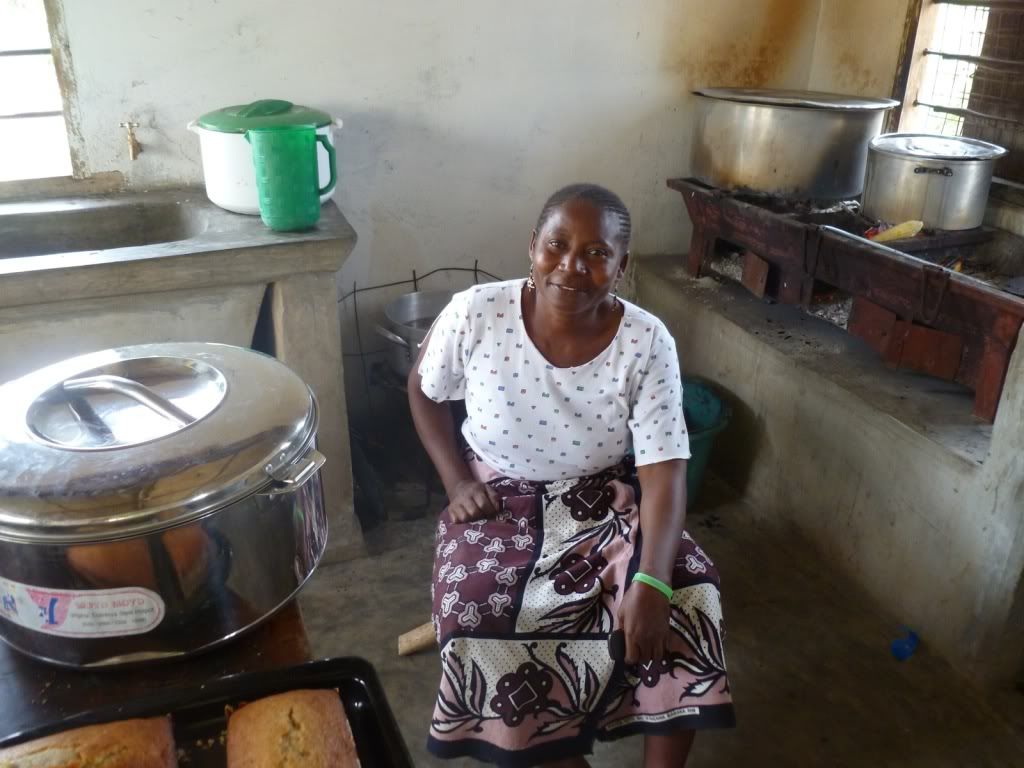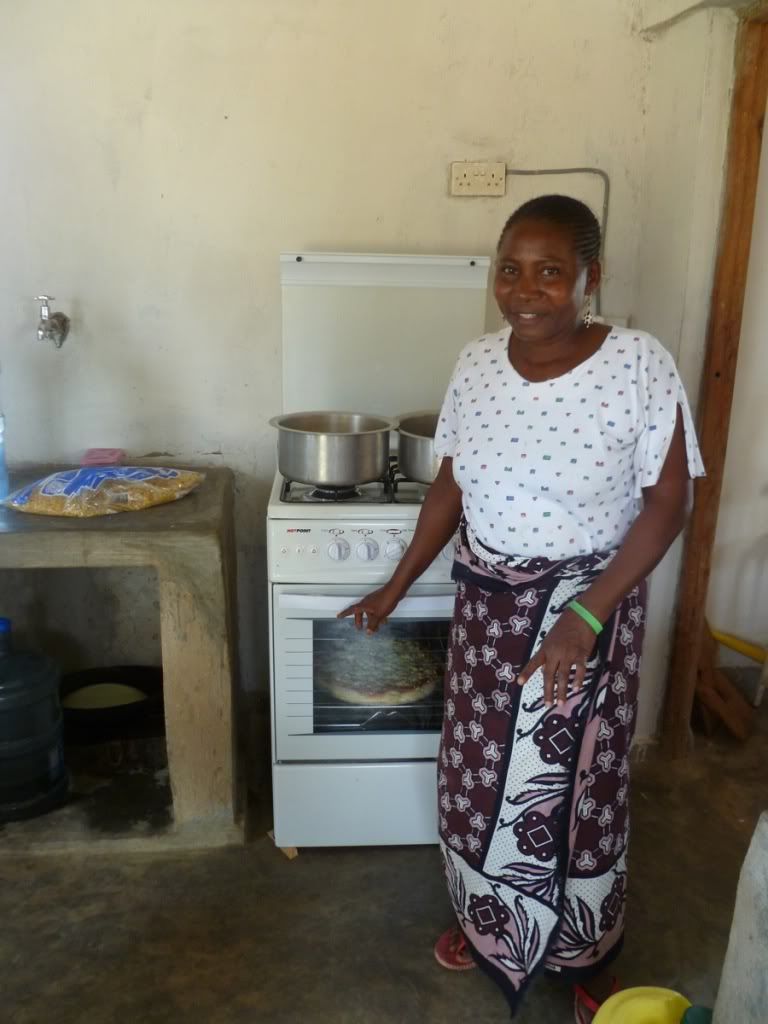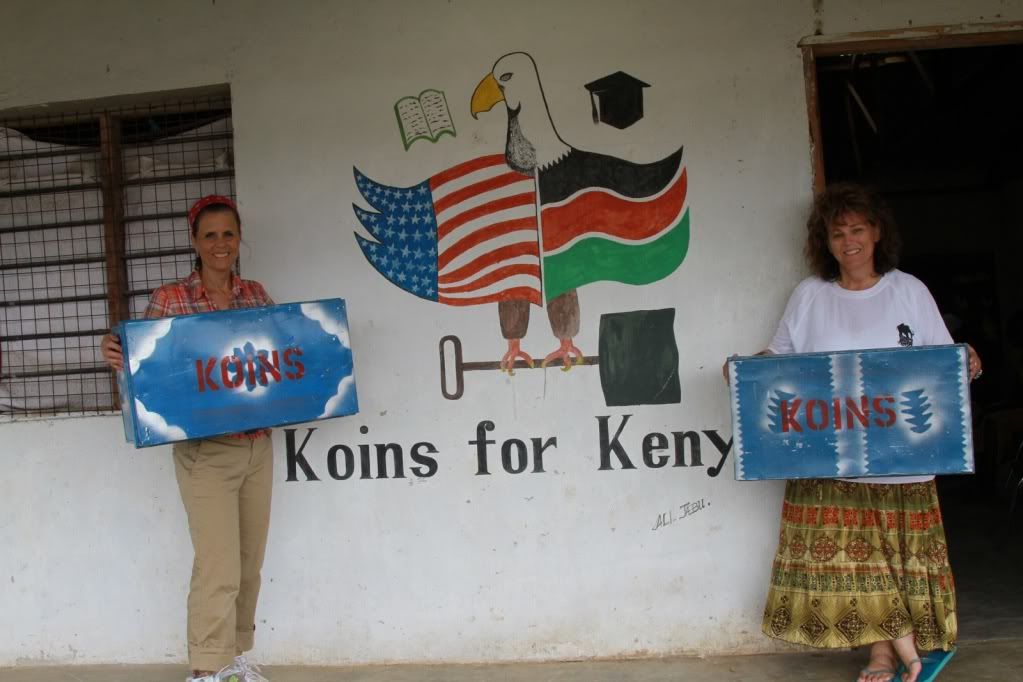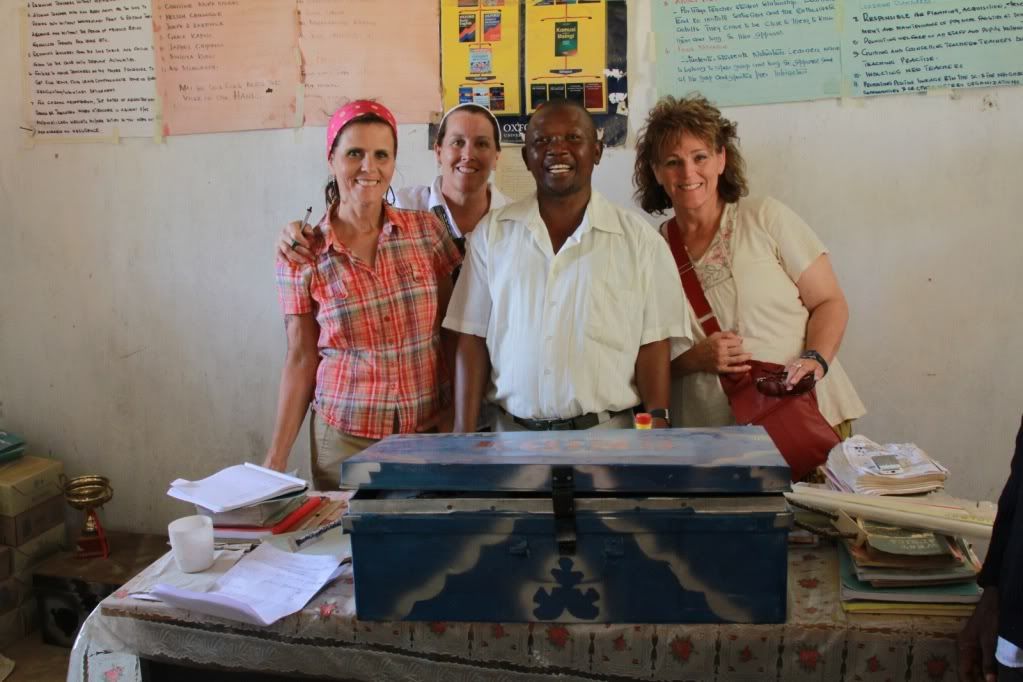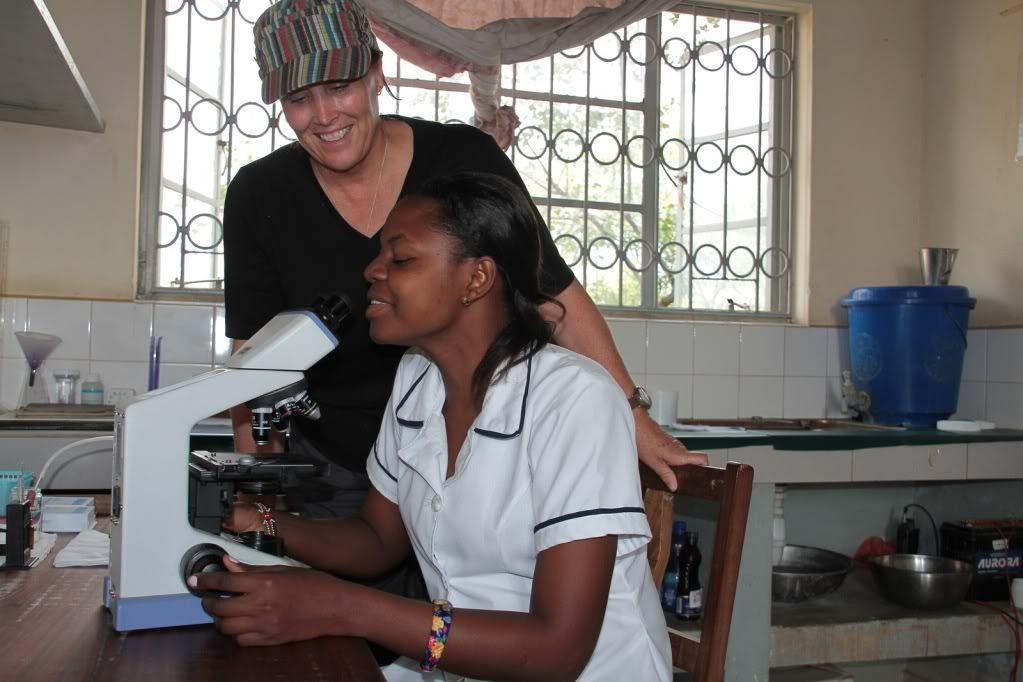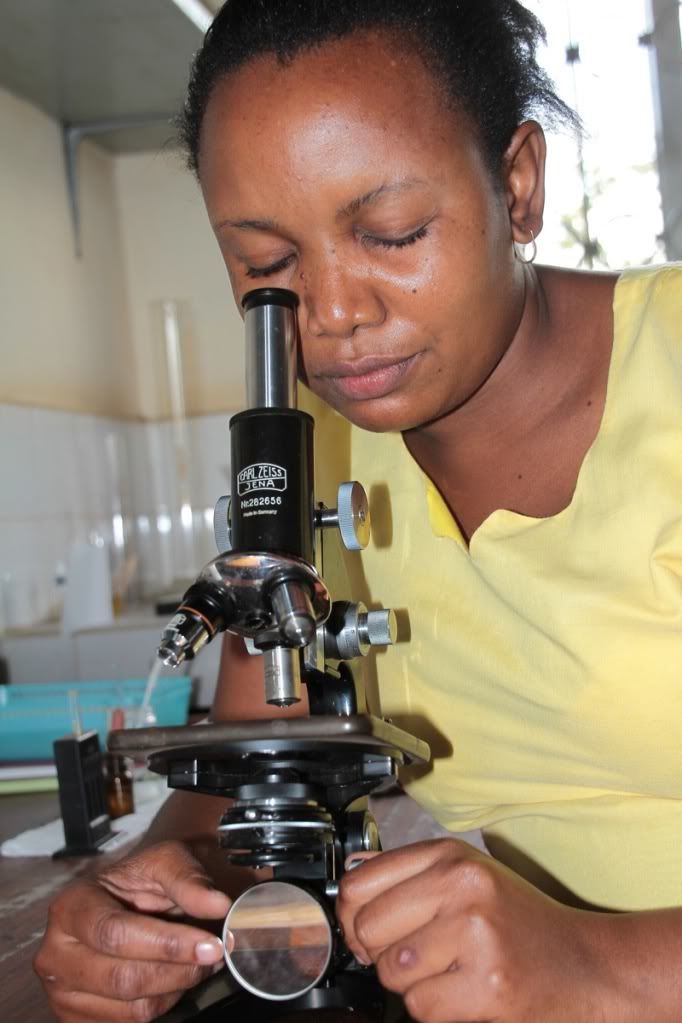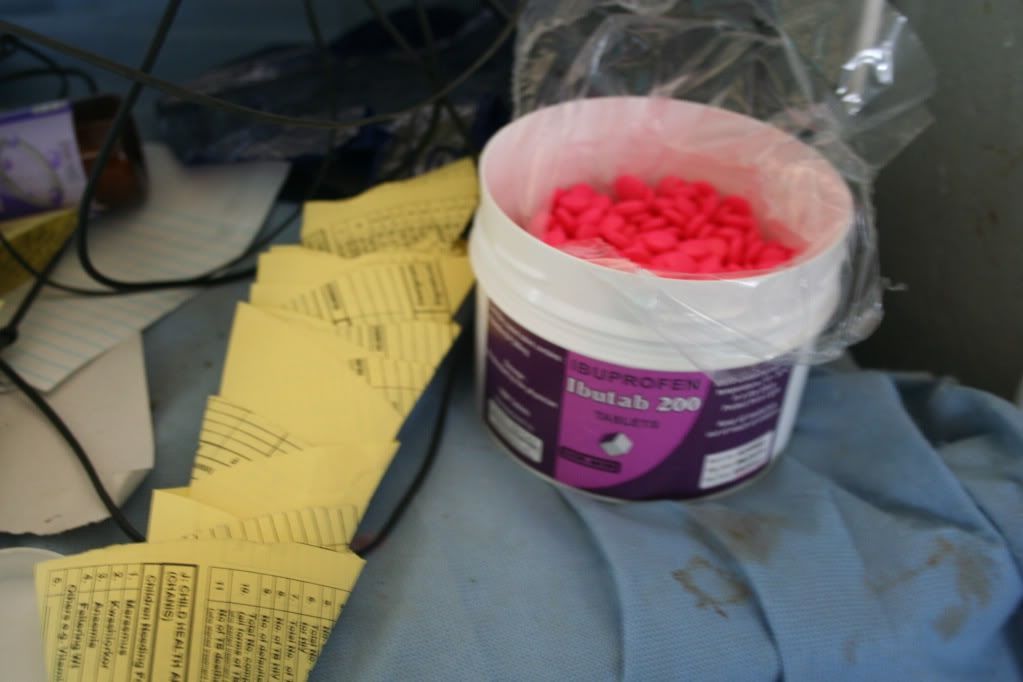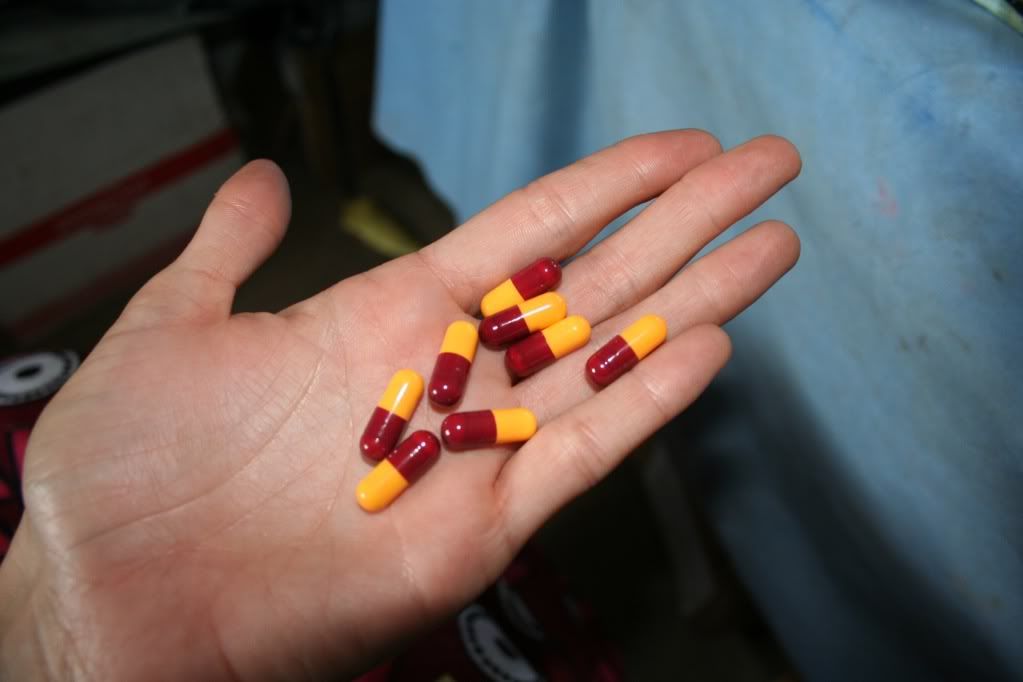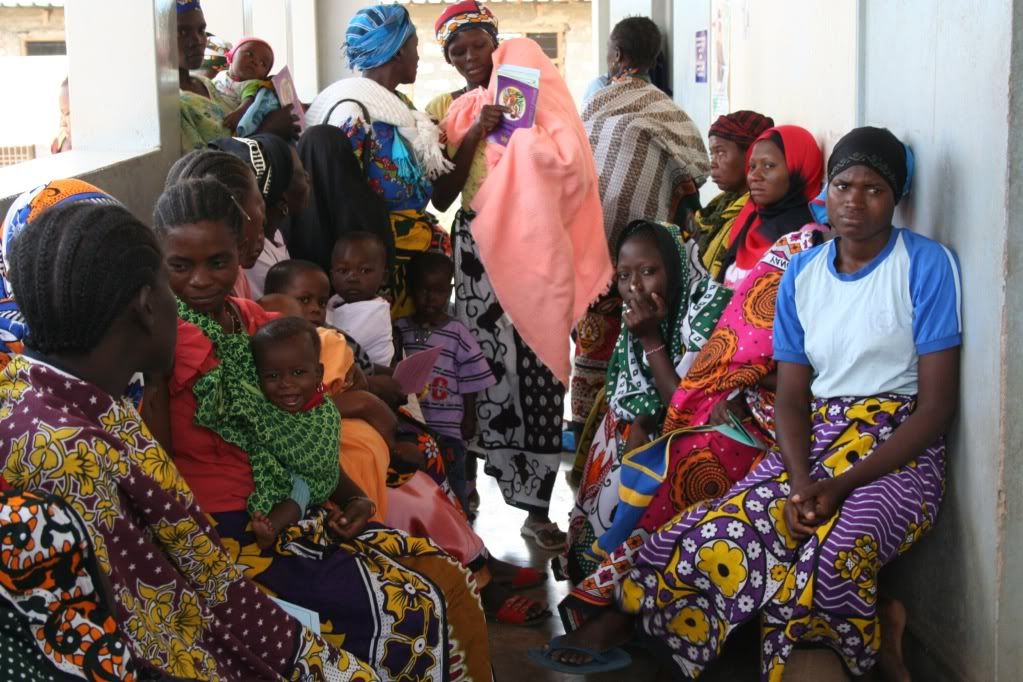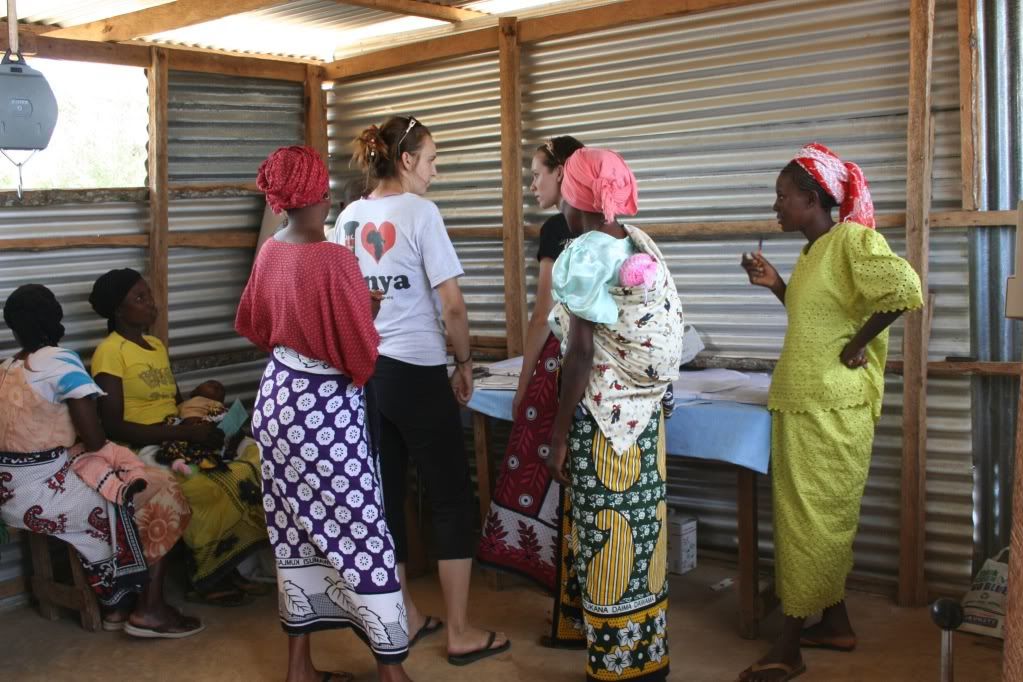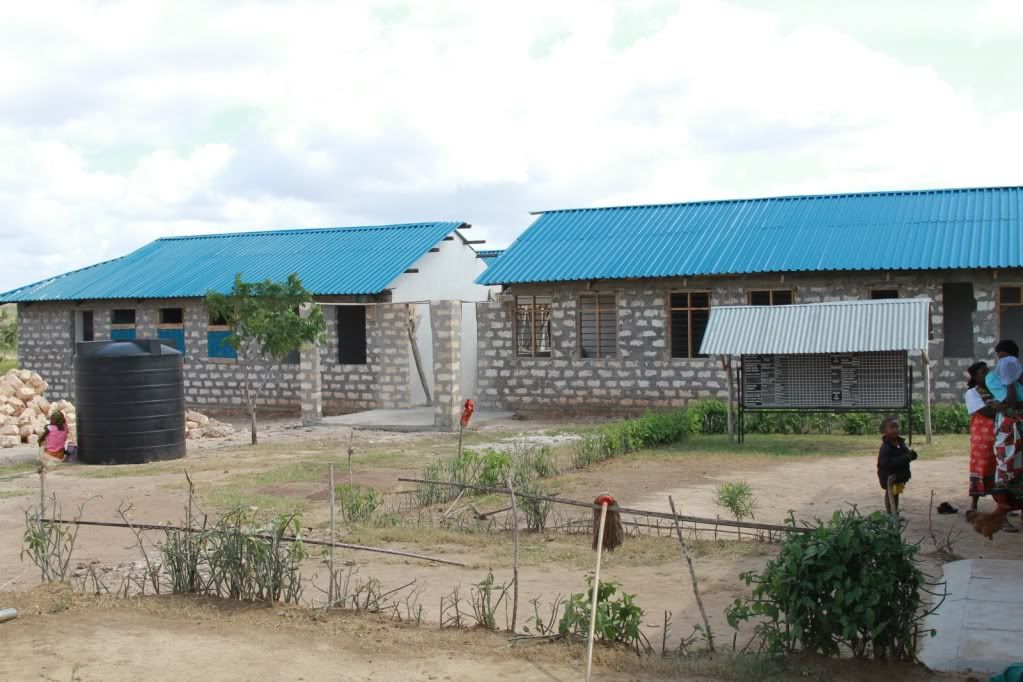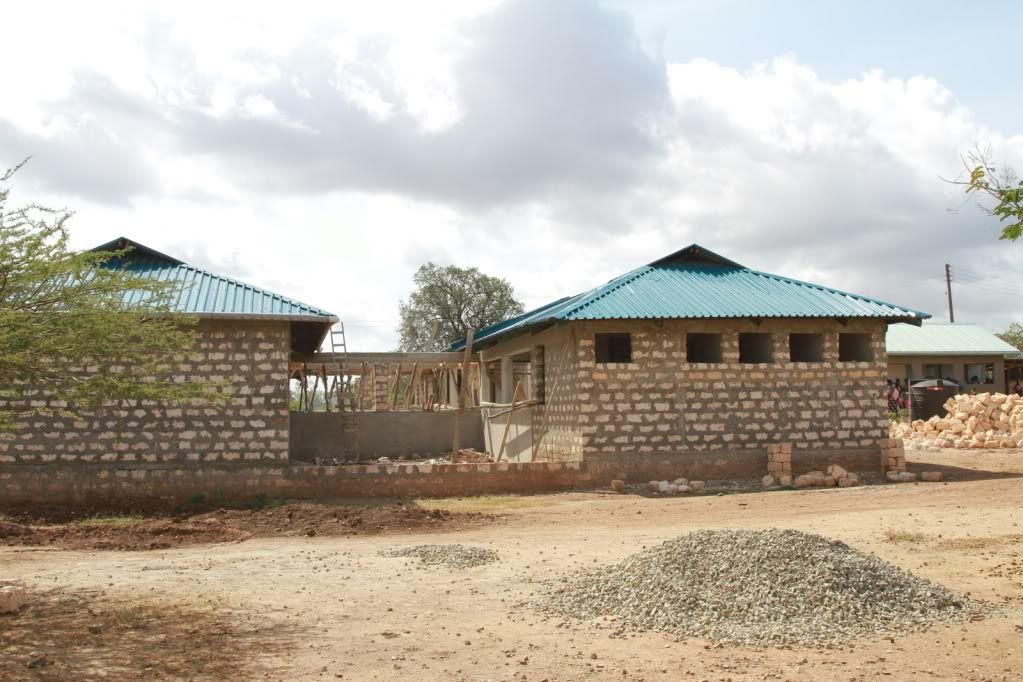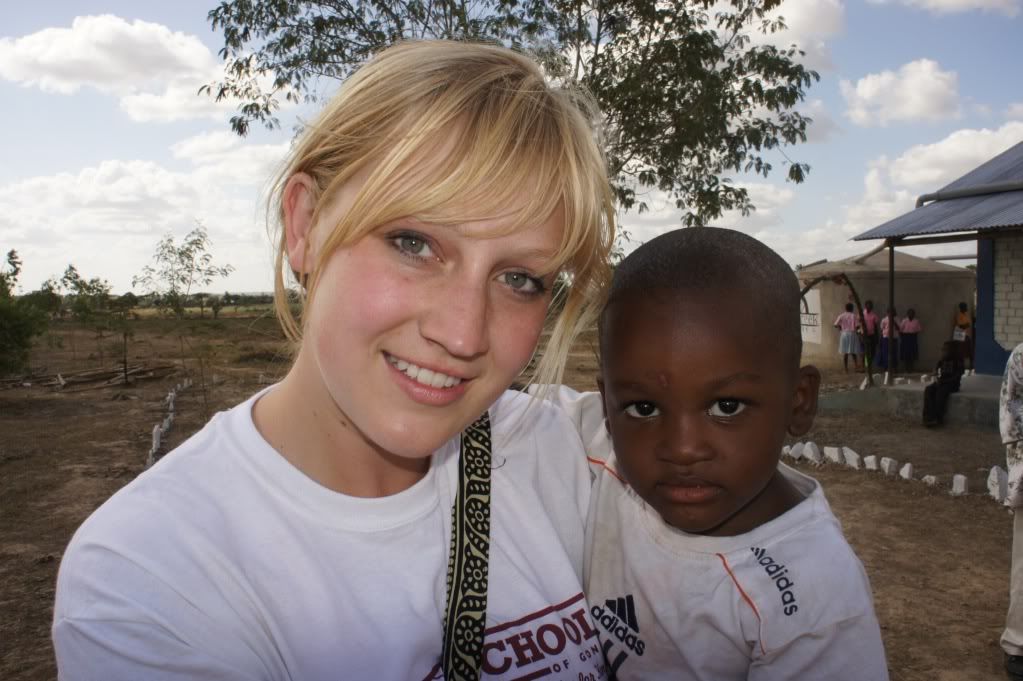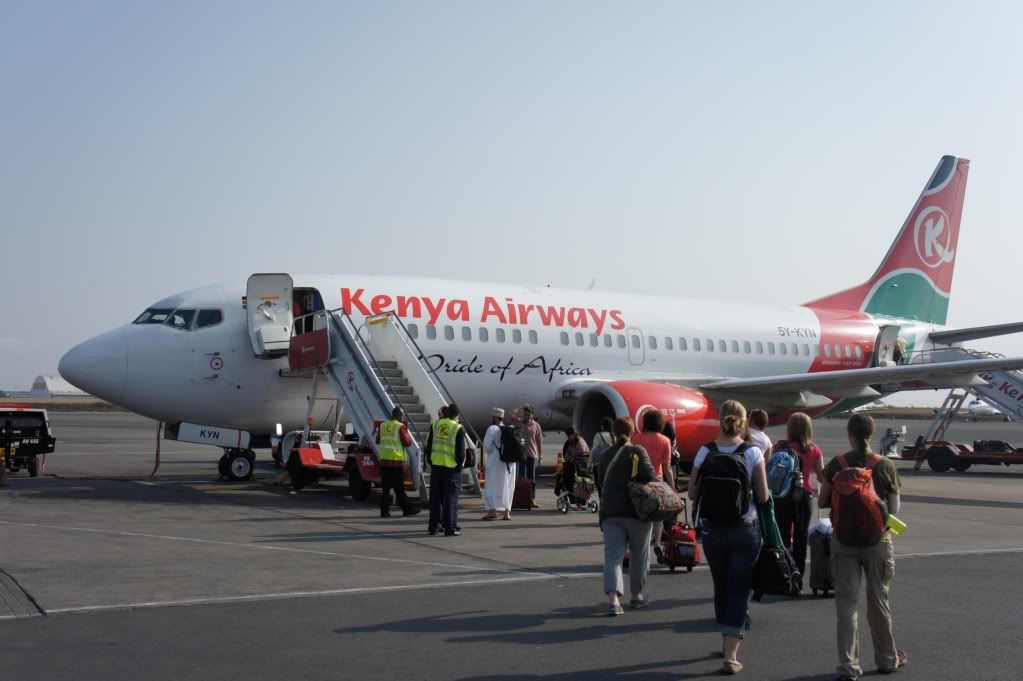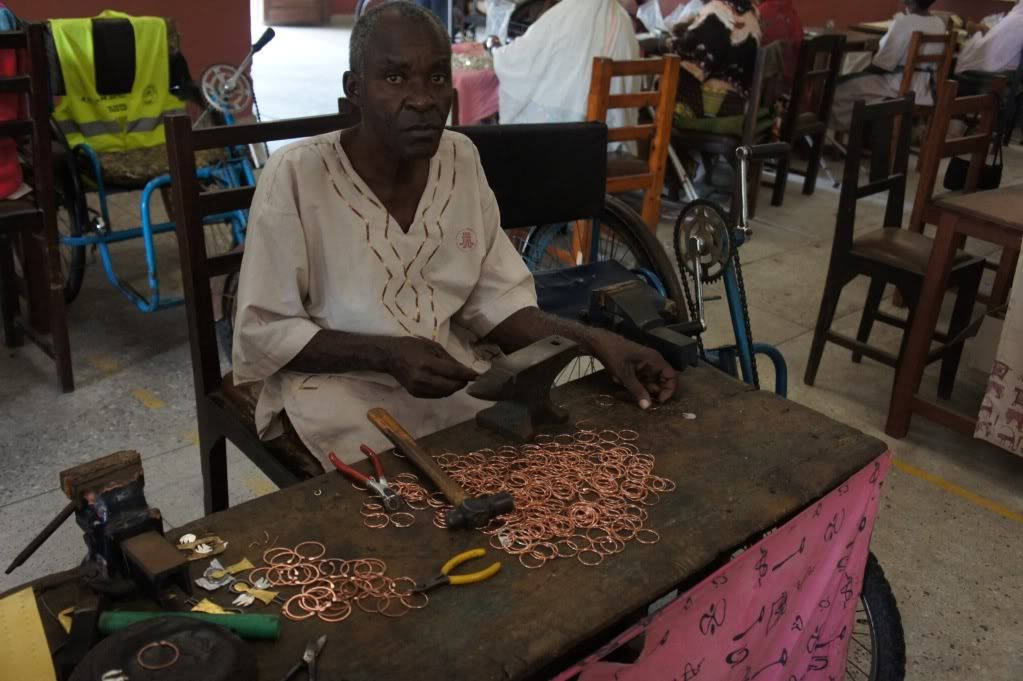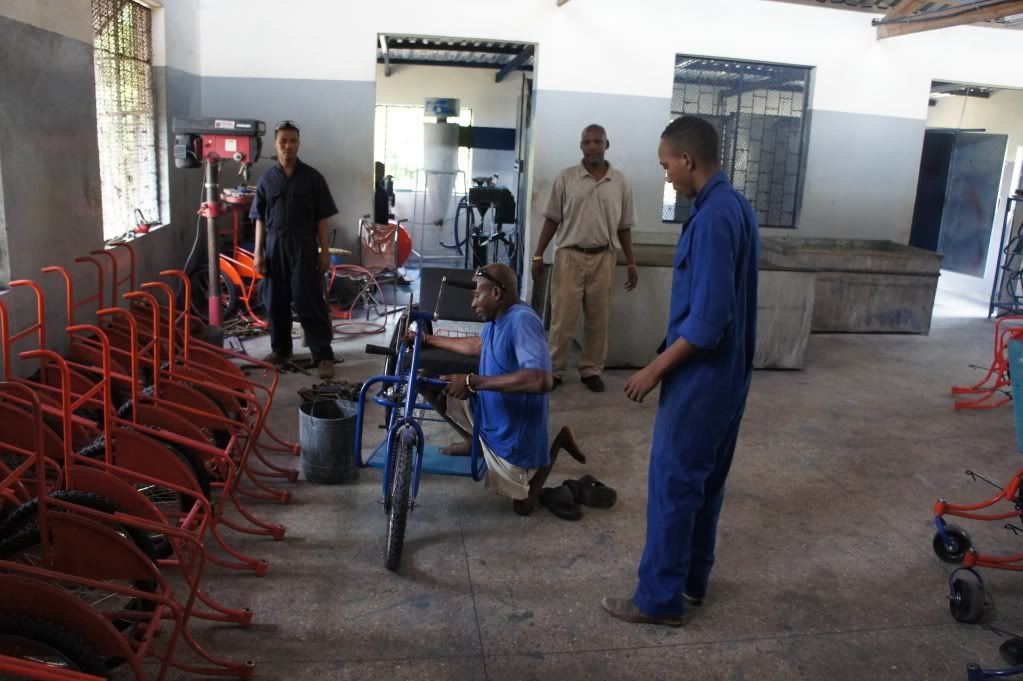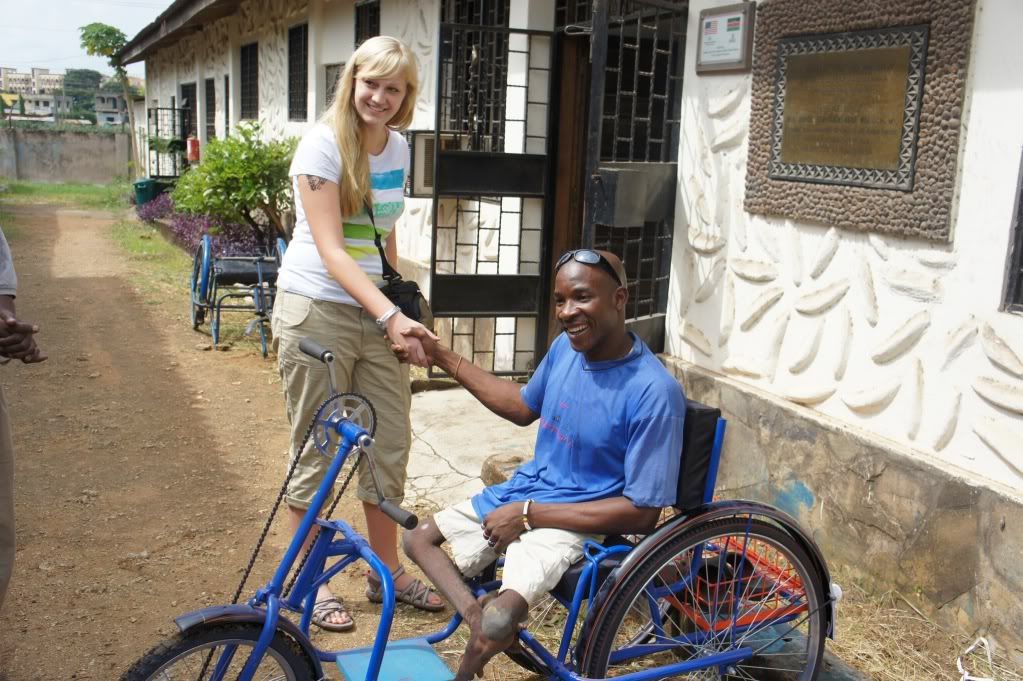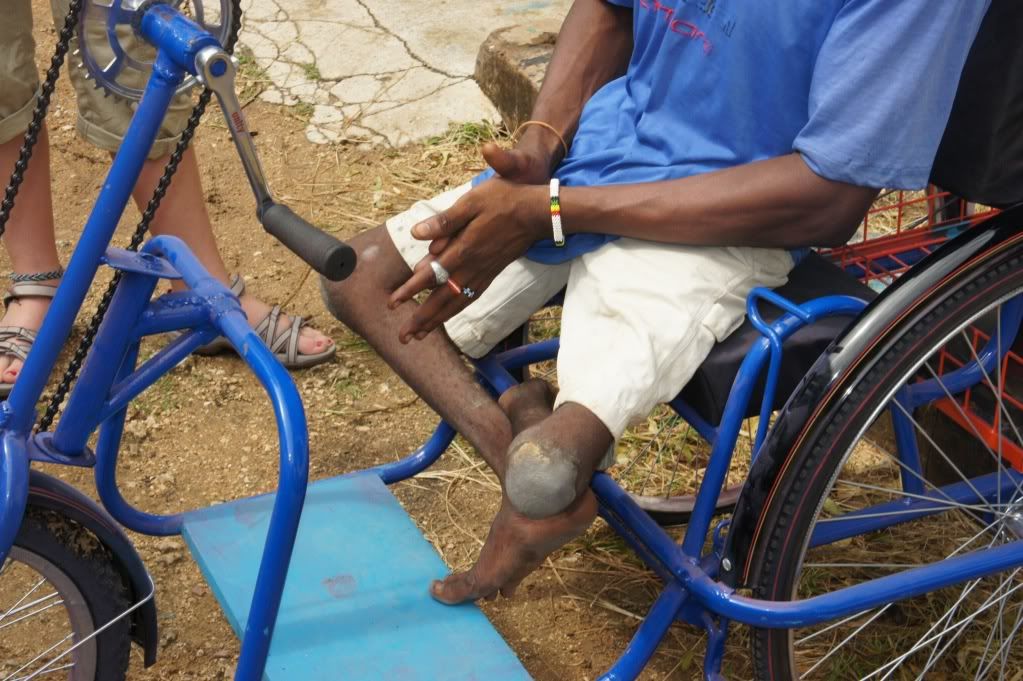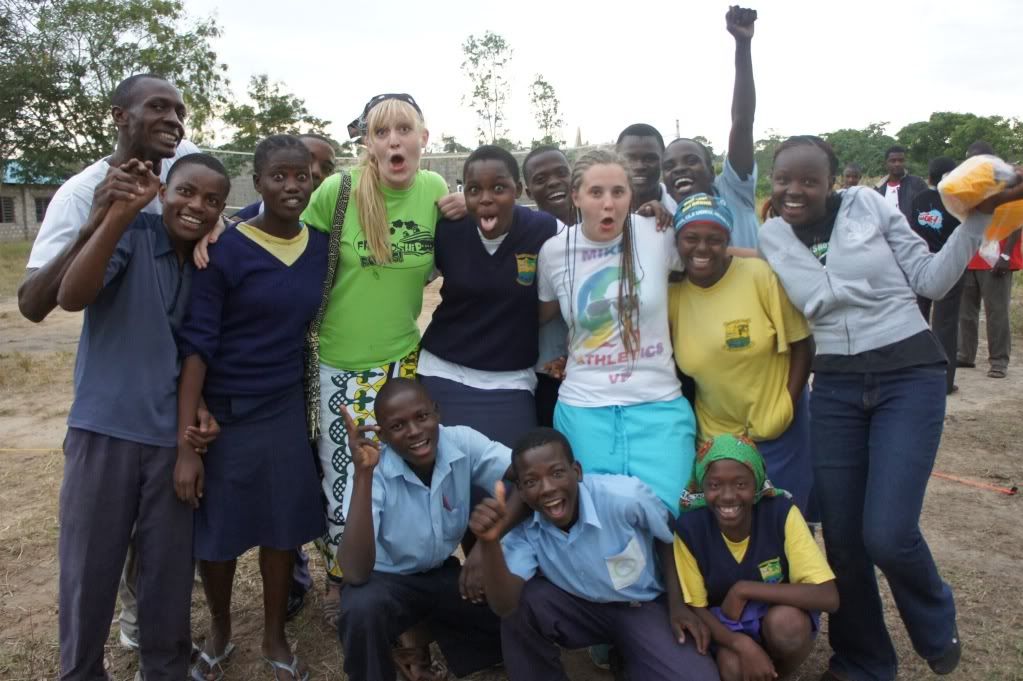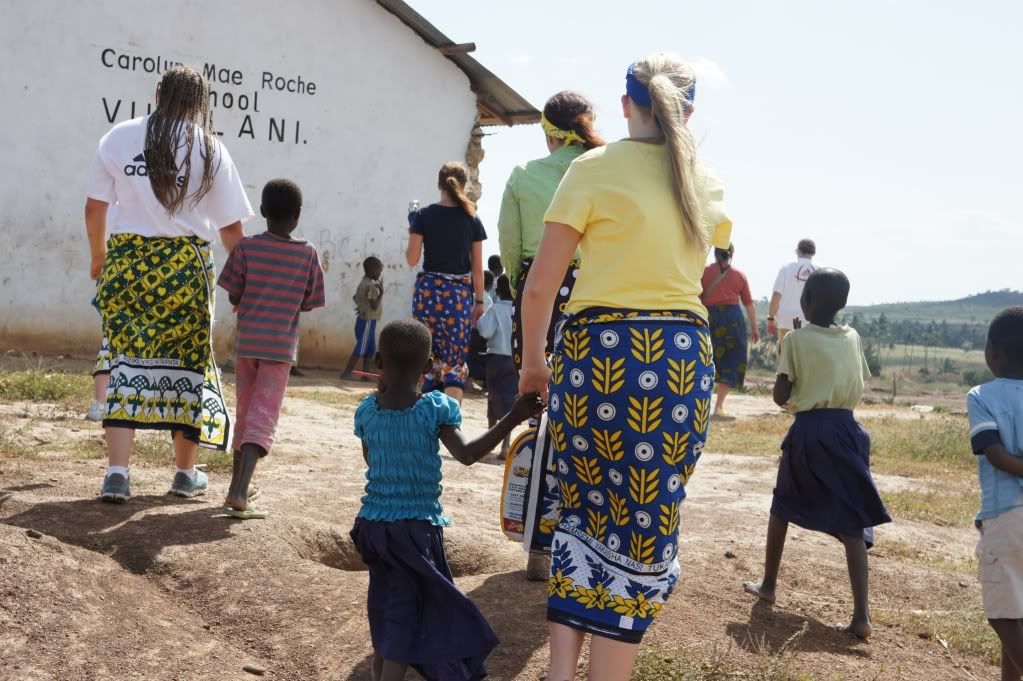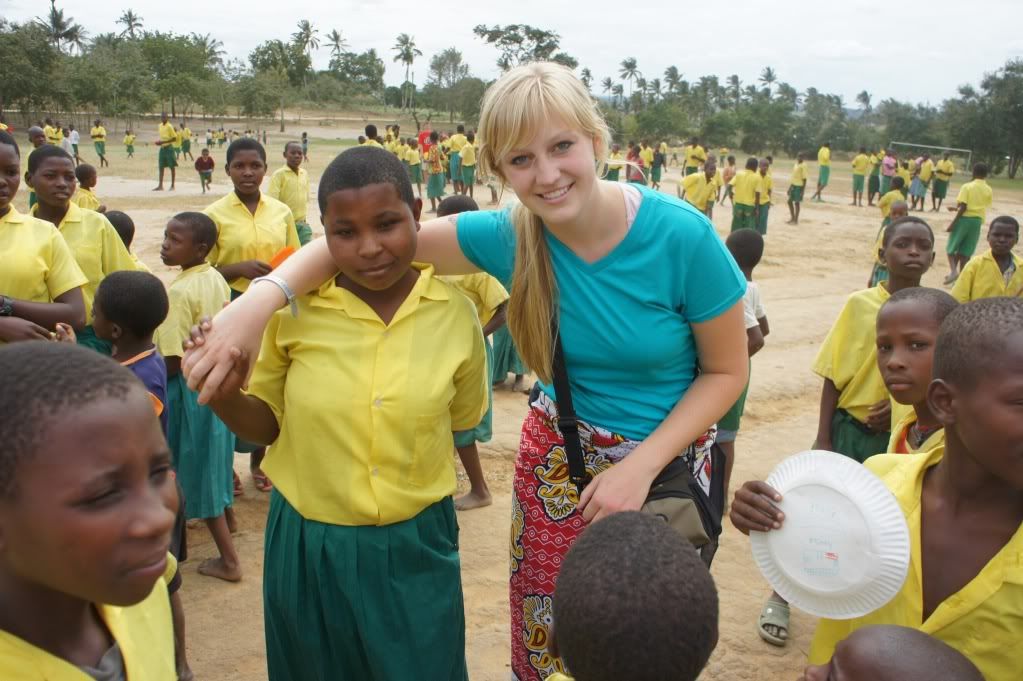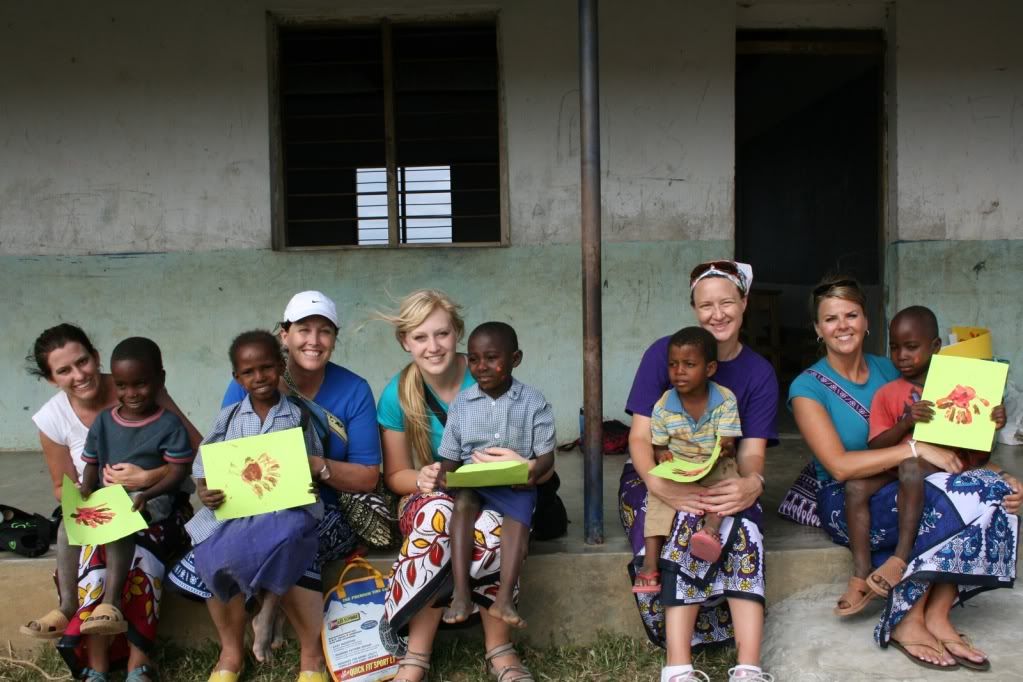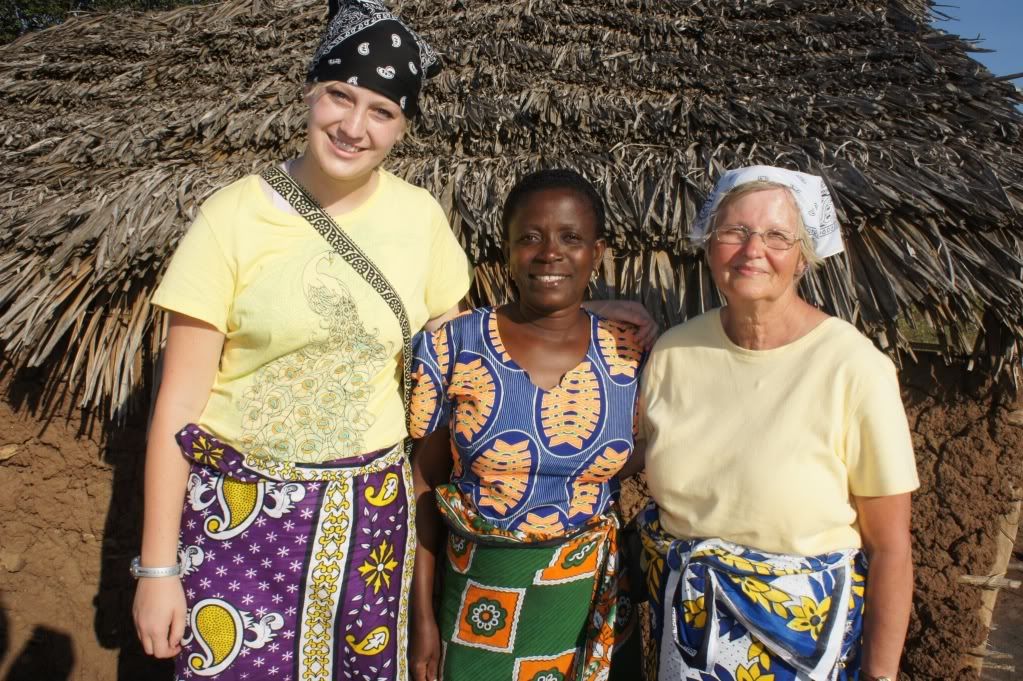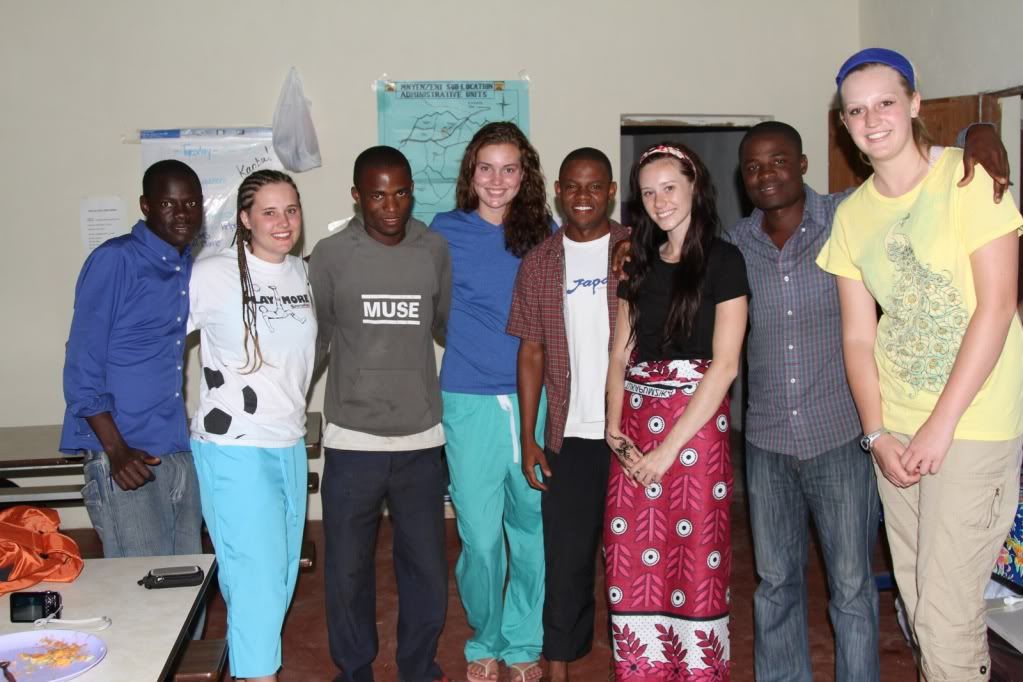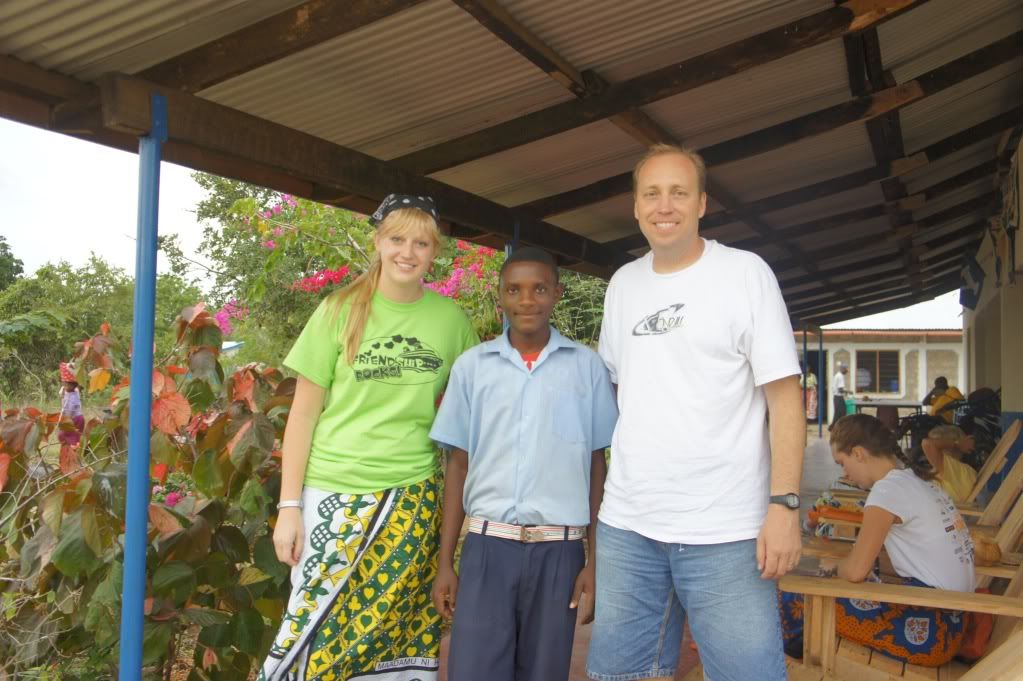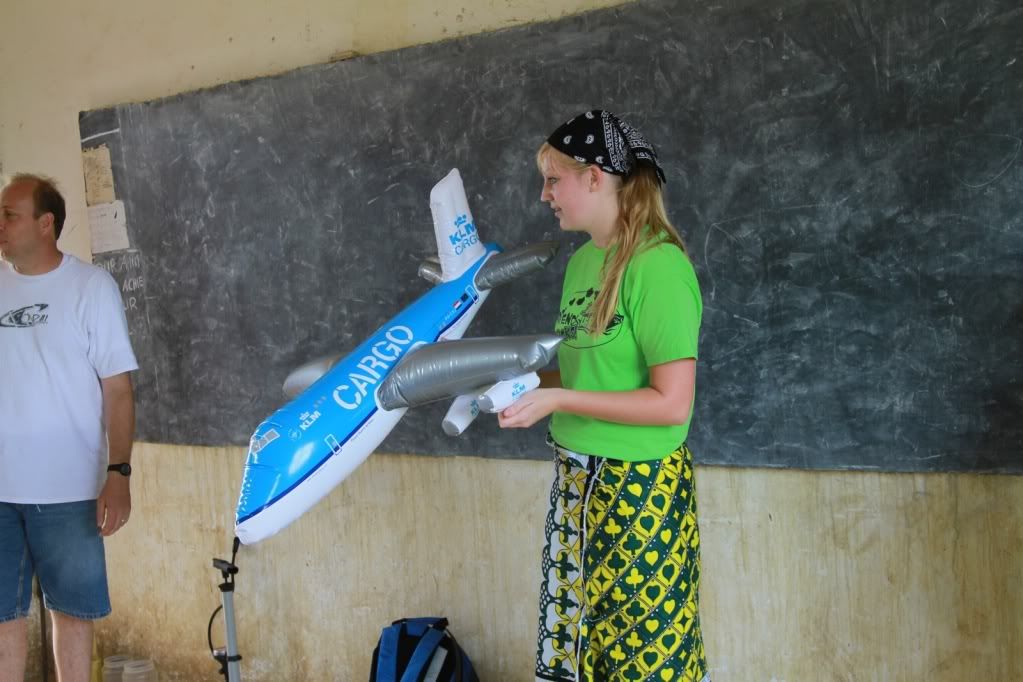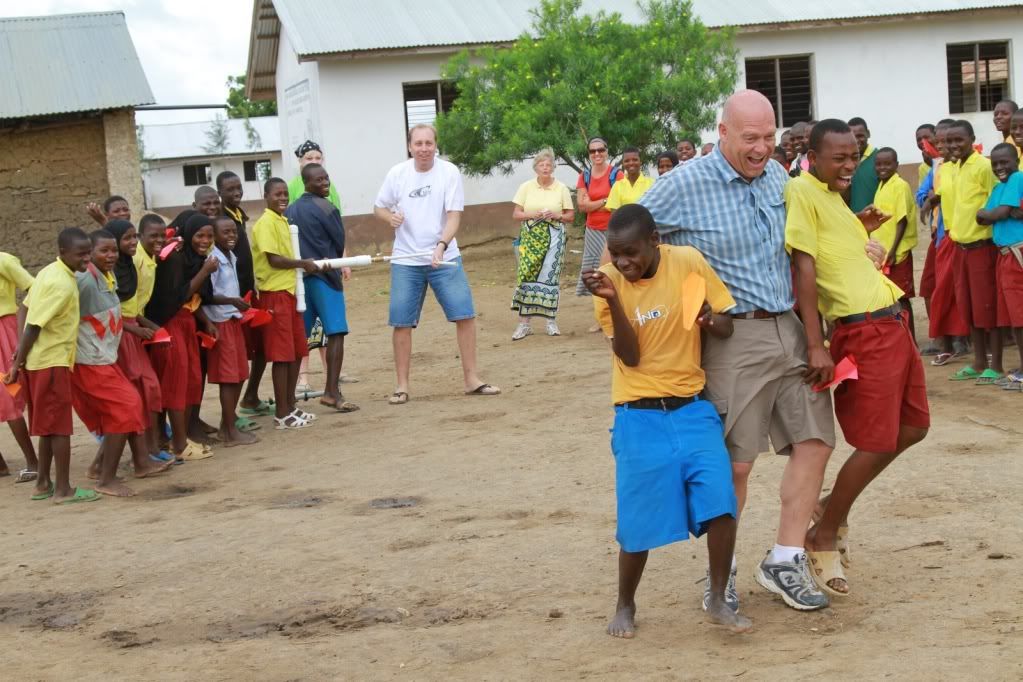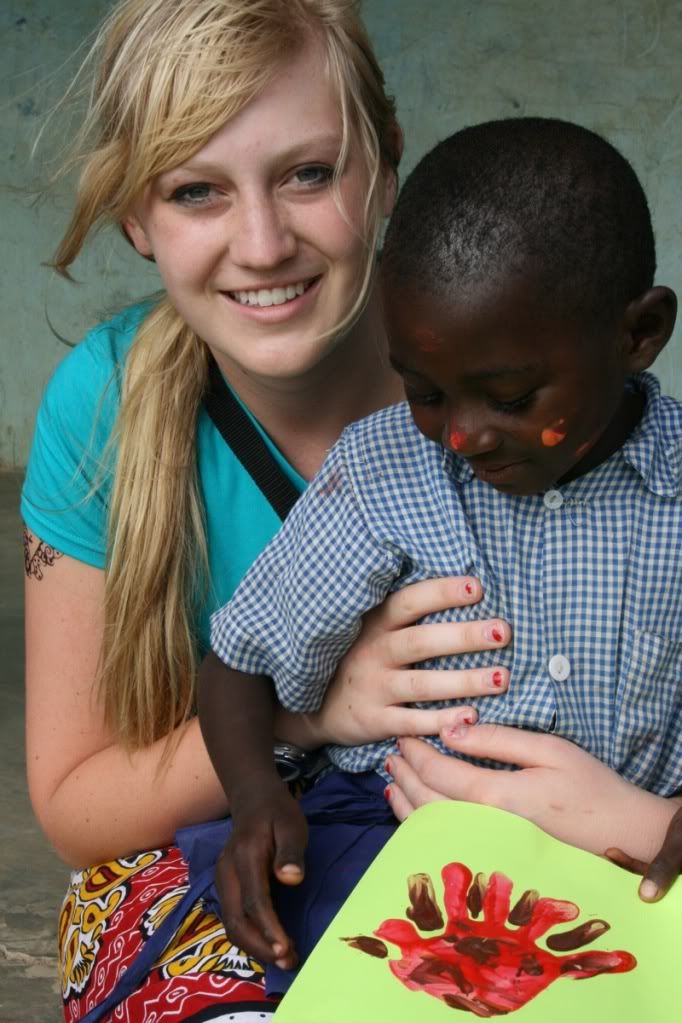A post by Karen Timothy.
 |
| Sue and Curt in front of the Gona classroom they funded |
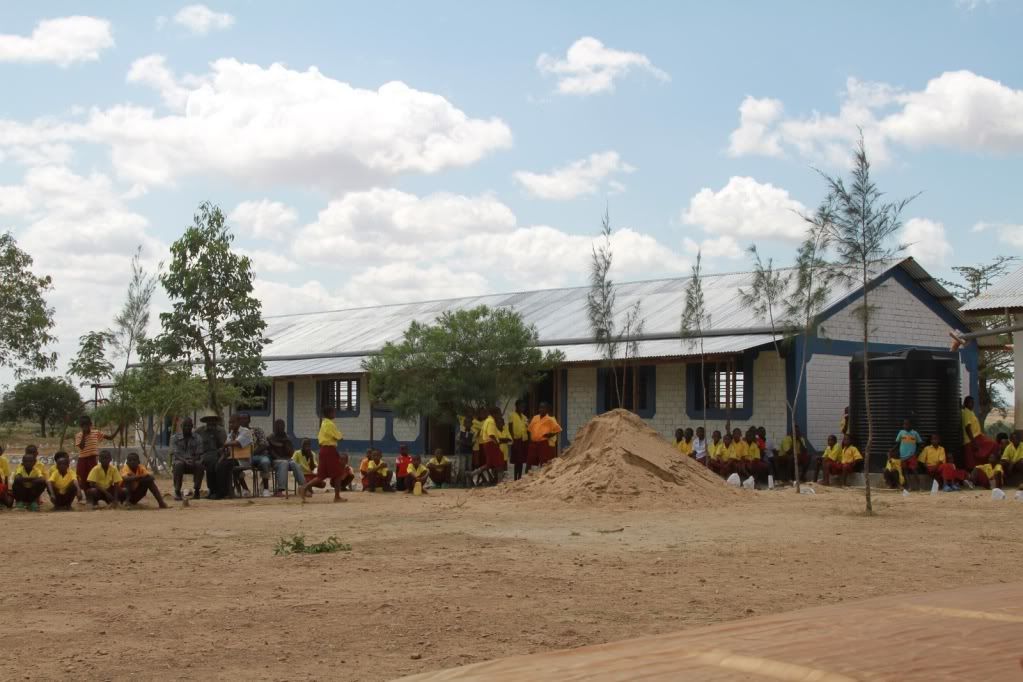 |
| Gona Classroom |
And now for the real purpose of this amazing trip to Africa….we were going to Gona, a small Kenyan village, whose history had left little marks on the hearts of those who were there the year before.
Gona was a typical African village with typical African people and typical African children that sang typical African songs. The summer of 2010, however, set their school apart from the typical African school….Koins for Kenya had built them a lovely pit latrine!!! There was a big celebration planned and much ado was to be made over the whole thing.
You can read about the 2010 Gona activities
here.
Just a day or two before the celebration, one young Gona school boy wasn’t feeling so good. It was time for his exams, however, so rather than miss school, he suffered through his tests and the rigors of getting to and from school with little to eat and reeling with sickness. That evening when it became apparent that the boy needed some serious medical attention, his uncle walked him to the nearest dispensary but found no help there. They quickly decided to try to reach the Mnyenzeni dispensary but it was getting dark and the boy had little strength left. Night had fallen by the time they reached Mnyenzeni and the Koins expeditioners were sitting outside, sharing what they called “Peaches and Pits,” – stories of the good and bad things that had happened that day. They noticed a disturbance under a nearby tree and someone went over to check it out. There under a big tree, not 50 yards from the dispensary, the young boy died, having suffered a painful death from malaria.
Even if this sweet boy had made it to the dispensary in time, there would have been nothing they could have done for him. As I’ve mentioned before, while the government does have medication that will cure malaria, they will not give it unless the patient has had a blood test confirming the disease. The Myenzeni dispensary had no way of performing that test because they didn’t have a microscope. You can imagine how sobering that night was for all who had witnessed such a tragedy. In typical African fashion, the women who had gathered around the young boy began to make a loud, trilling sound that filled the black night, indicating that someone had just died. It was that sound that informed the boy’s mother that he had passed away. She could not travel as quickly as the others and had not arrived with them to see him take his last breath under the tree.
There was some question about whether or not to go ahead with the Gona celebration with this sadness hanging over everyone but the preparations had been made and it was decided to proceed. During that celebration, Koins was given an envelope containing 10% of the cost of a new school building. While they had several buildings on their makeshift campus, they needed more room and were asking for help with a new 3-room building. Sitting there in the heat, choking on the soda pop and cookies that must have cost the villagers a fortune to provide, Sue knew that she was the one who was supposed to build the new school in Gona. She says she groaned inside but if she did, it was just the groan of someone good getting up out of a comfortable seat to do something hard and wonderful.
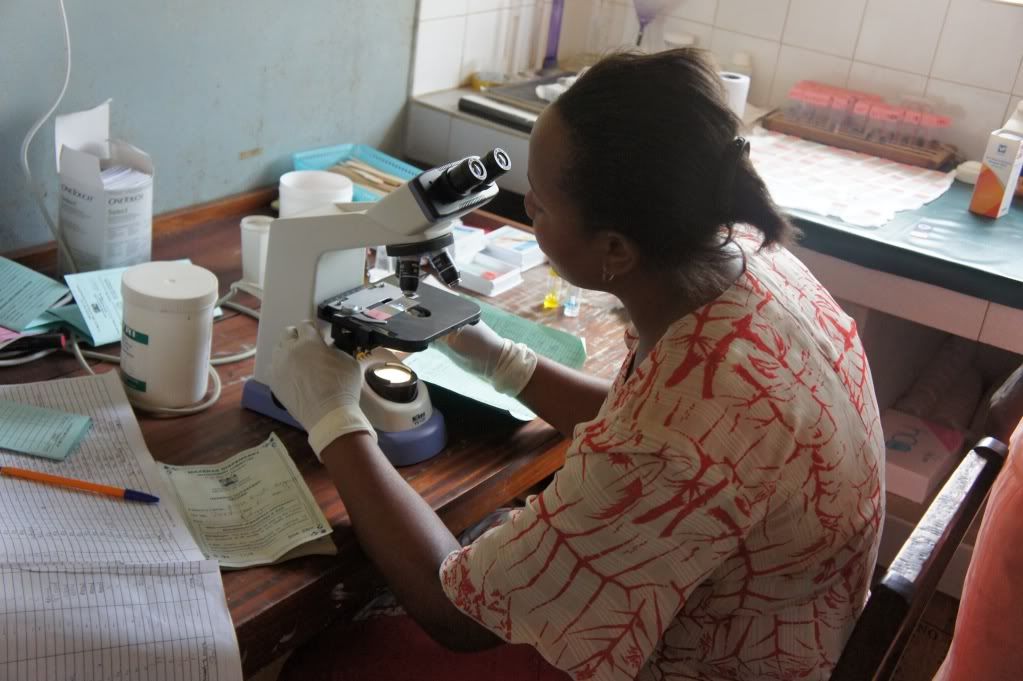 |
| Microscope funded by Cindy's class being used at Mnyenzeni dispensary |
Upon their return home, Sue began a year long journey of raising the money to build the classroom in Gona and Cindy went back to school with a determination that not one more child would die of malaria on her watch. Sue and Curt enlisted the help of friends, family, neighbors and boy scouts and raised not only enough money to build the school but also desks, water cisterns and a latrine…with money left over to put towards another school or project of their choosing. Cindy welcomed a new classroom of students at Windridge elementary with her infectious enthusiasm and spurred them on to raise $1,500 to buy a microscope for the Mnyenzeni dispensary. That was the microscope that arrived earlier this year which, in the first week, saved 6 lives by identifying malaria in 6 out of 8 blood samples.
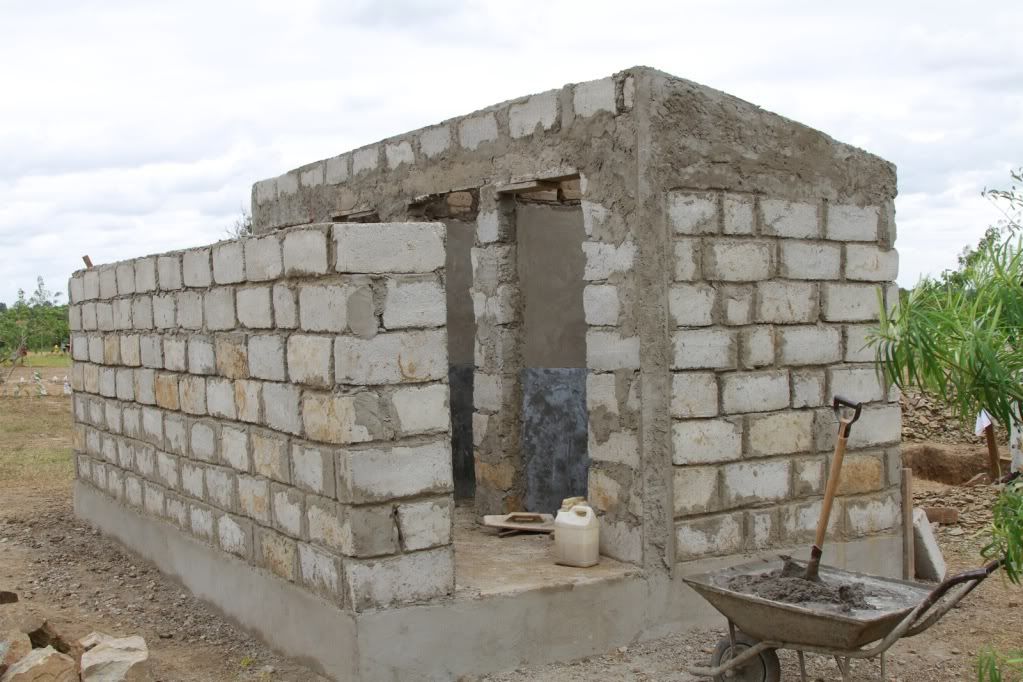 |
| New Gona latrines under construction |
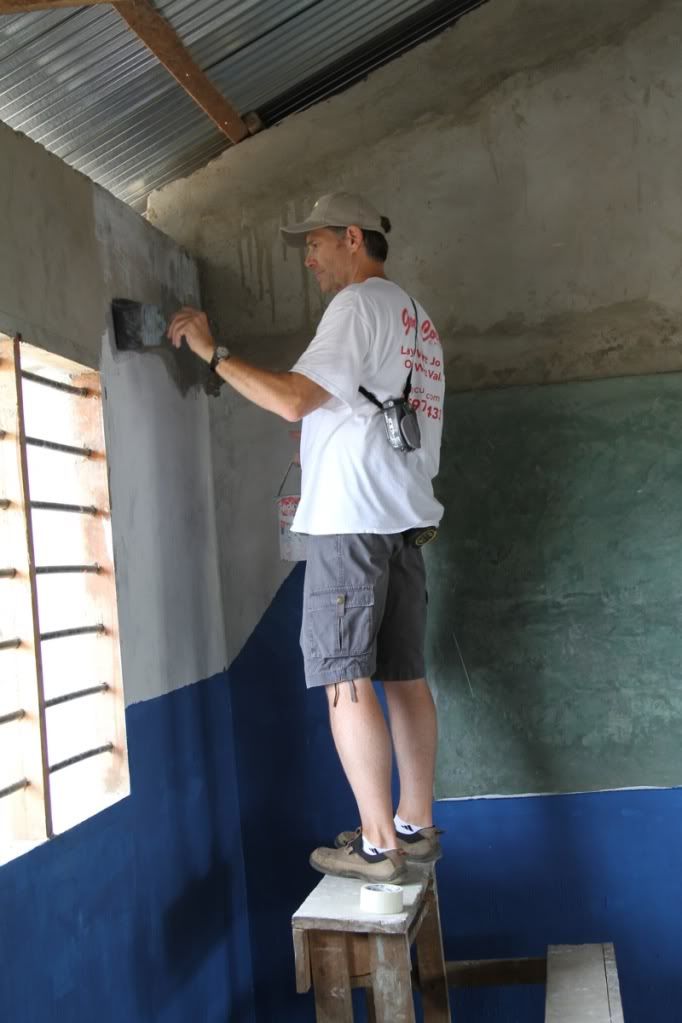 |
| Curt painting inside the Gona classroom |
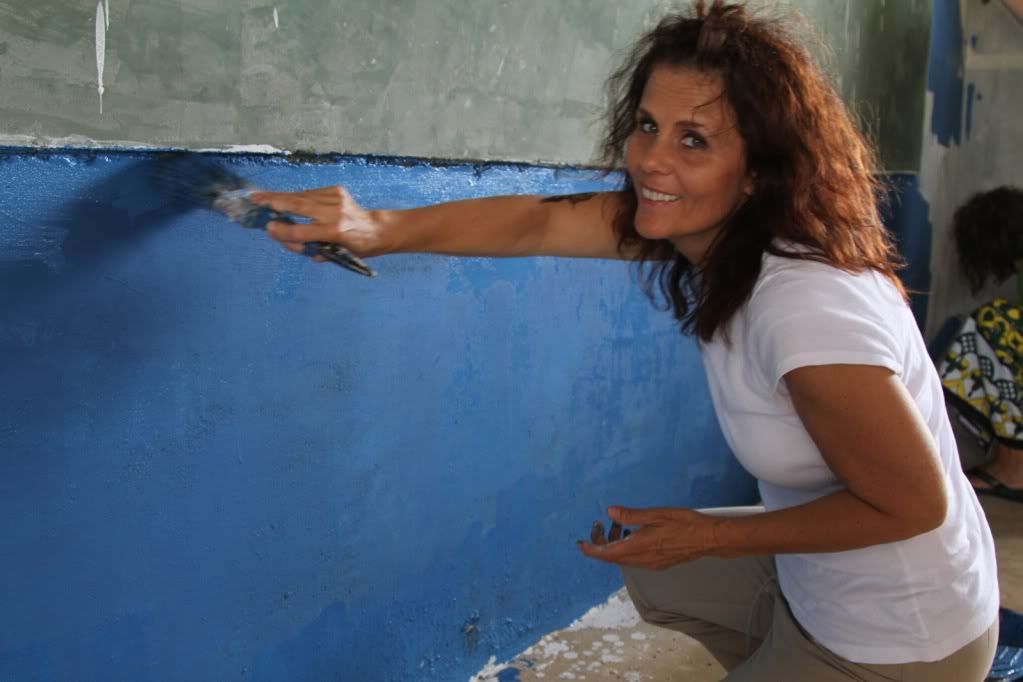 |
| Karen painting in the Gona classroom |
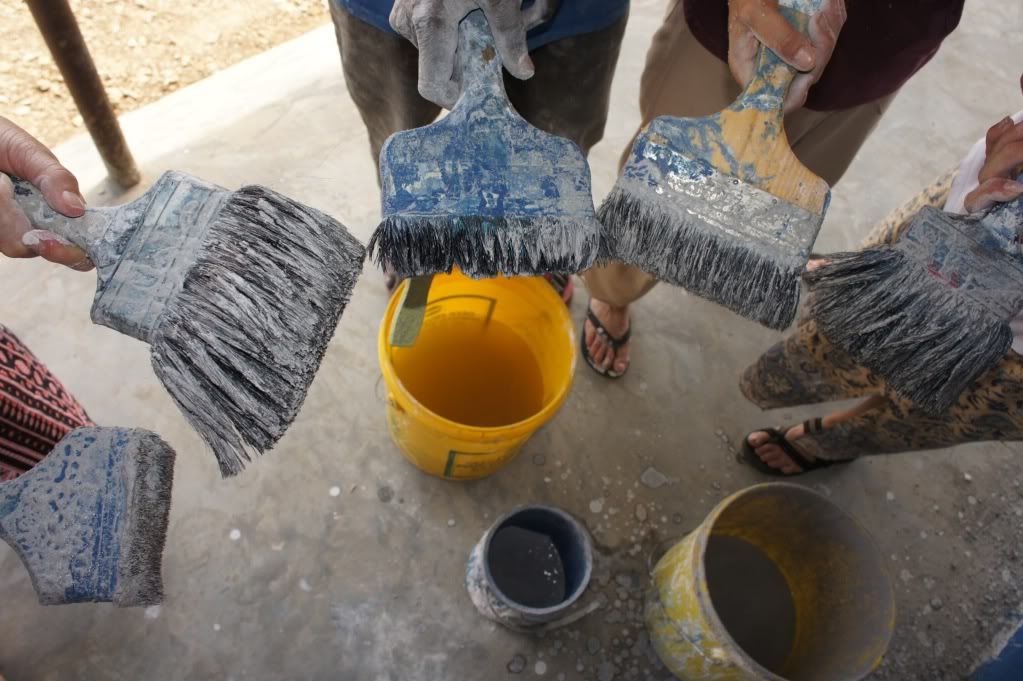 |
| Variety of paintbrushes used to whitewash Gona school |
By the time we arrived in the village this summer, the Gona school was almost ready. The celebration was about 5 days away and it just needed to be cleaned and painted. My ears pricked up! I quickly confirmed what I had already suspected…. painting an African school does not resemble the faux painting I do at home. The primer seemed to be sheet rock dust mixed with water and the brushes we painted with were nothing short of hilarious! Some had such long heavy bristles that it was like painting with a wig on a stick. Other had been chopped off so many times that the ½” bristles barely stuck out of the handle. Worse…once we got that awful primer on, the school folks stood back and proudly said, “There!!” Whoa! You could rub that stuff off with your shirtsleeve but that was all they were putting on the inside walls. Fortunately, they have this style going where everything is 2-toned so we were able to paint “below chair rail” – minus the chair rail – a bright blue, which greatly improved the overall look. Then we went outside to paint more blue and noticed that the white primer had been smeared over some of the brick. We were told that the bricks would get a coat of white paint the next day and the alarms in my head started going off. Sure enough, we got all the blue painted with the edges nicely cut in and – to make a long story short – the next day 50 kids and parents with buckets of how-the-heck-they-got-it-I’ll-never-know white OIL paint finished painting the school, obscuring the fact that there had ever been blue paint anywhere near the building! I can only imagine the whole scene. These people are used to painting with the watered down primer and somehow they had gotten their hands on oil paint. They were told it would come off with water but it won’t. I don’t want to see their school uniforms. I can’t imagine their little hands, and legs, and feet! They had flung it high and low so even their heads must have been covered! Curt and Mike about died when they saw it. After a bit of stomping and fuming and a couple of diet cokes, they resolved to go back the next day before the celebration and repaint the whole thing. They did. It was beautiful. Life goes on.
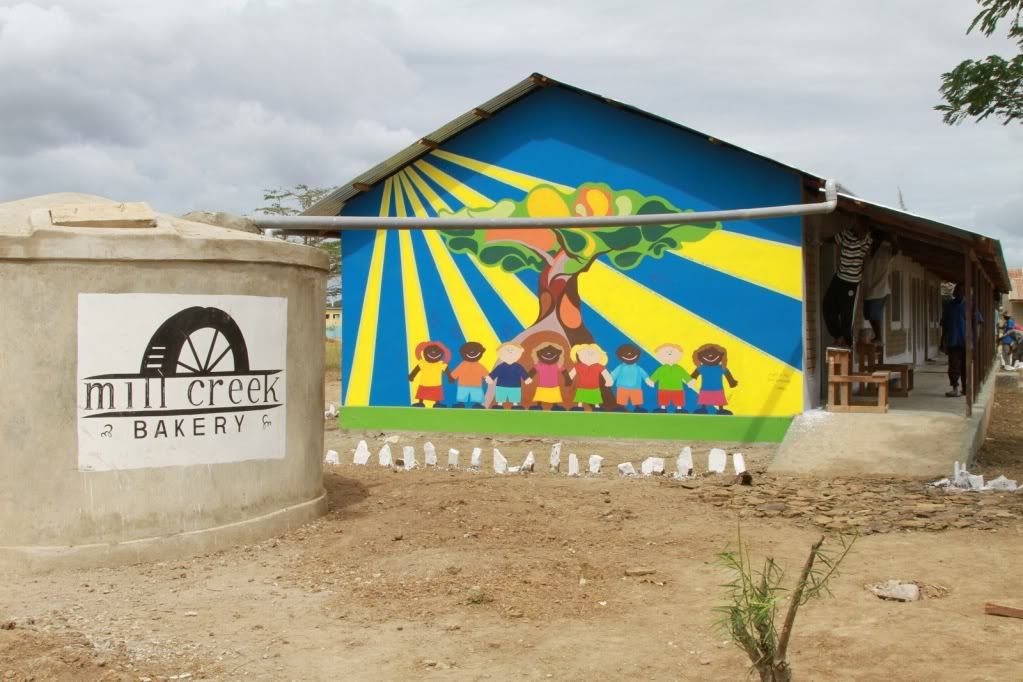 |
| Mural and cistern and the Gona classroom |
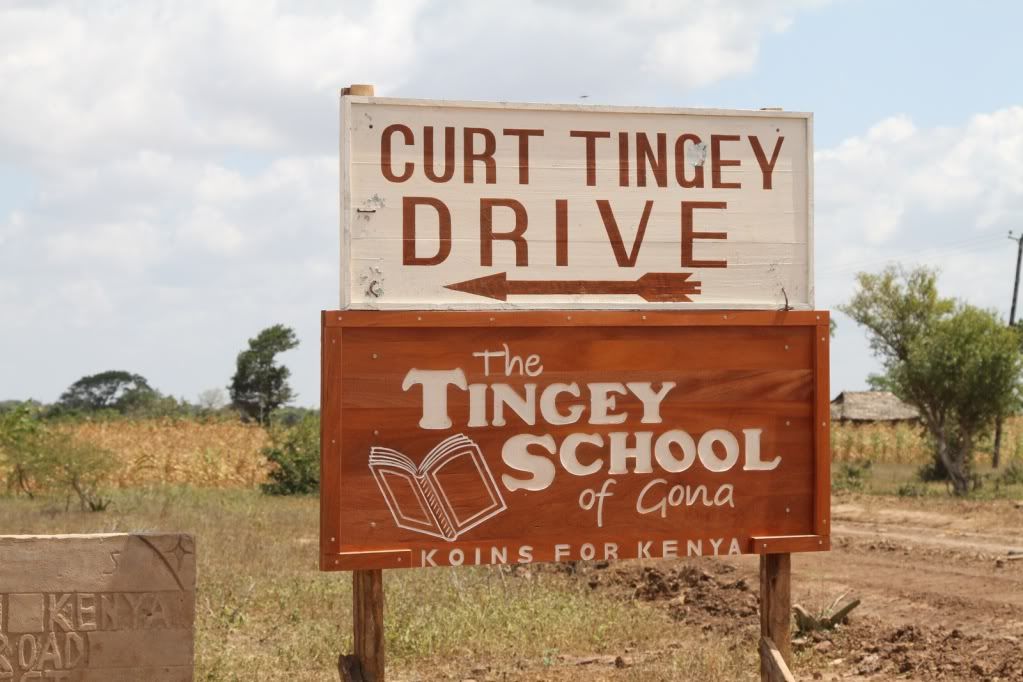 |
| Sign from main road leading to Gona school |
I was happy to be in the van with Sue on the drive to the celebration because she had not yet seen what the rest of us had. The road to Gona had been renamed, “Curt Tingey Drive.” I knew she’d die and wanted to see the look on her face. She was a good sport about it though and was just glad they hadn’t named it “Mama Gona Drive” like Curt wanted!
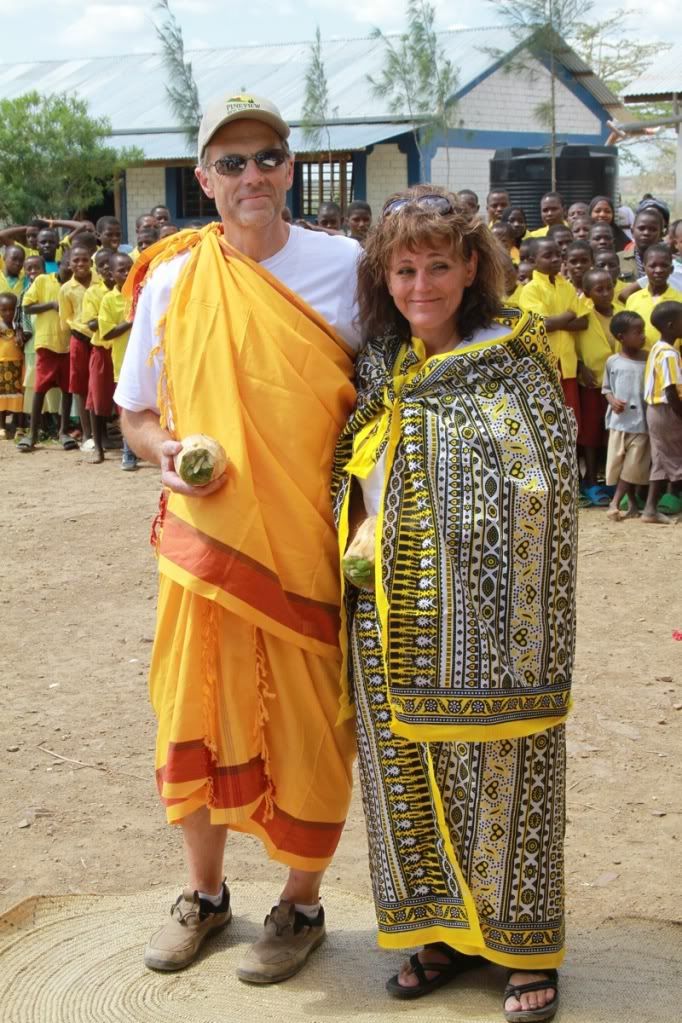 |
| Curt and Sue being honored at opening celebration of Gona |
At the celebration Curt and Sue were given Duruma names and wrapped in beautiful kanga cloths as they were adopted into the Duruma tribe. Next it was Bret and Ingrid’s turn, then Mike and Cindy’s. They then asked Tara to stand and they gave her a Duruma name – Raziki. That meant “Gift from God.” They told the rest that they’d get back to us with our names and by the end of the ceremony we had all been given a Duruma names and kanga cloth and were properly adopted by our new family.
 |
| The entire group received new kangas and Duruma names |
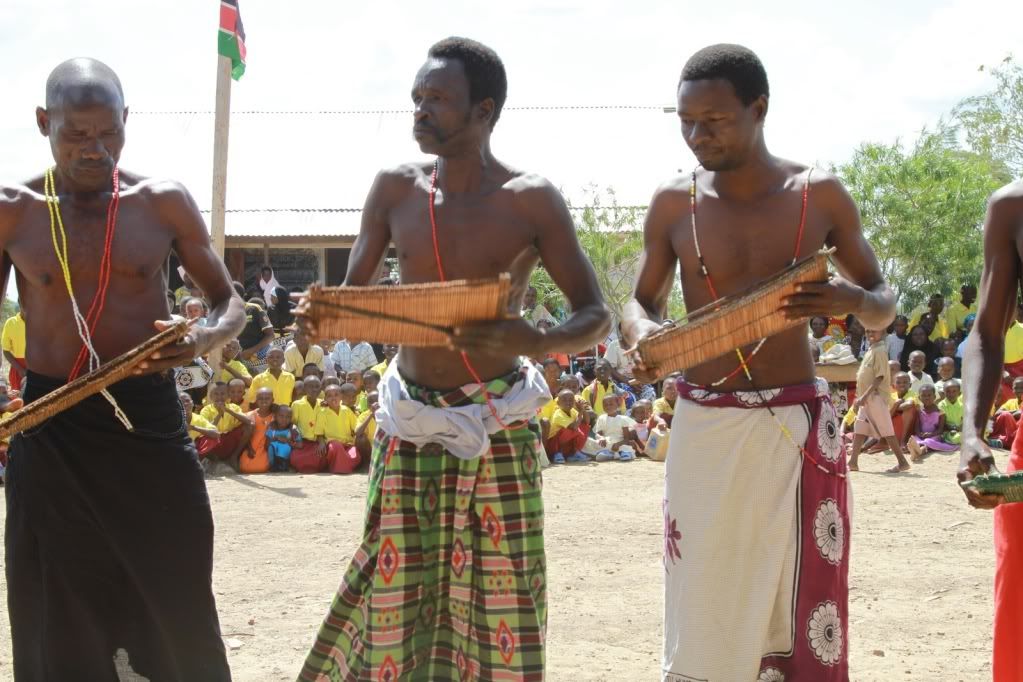 |
| Dancers at the Gona celebration |
 |
| Some of the Koins sponsored university students are honored at the Gona celebration |
 |
| Bret receives 10% funding from Bofu, the next school to be built by Koins |
Next came the dancers and the presentation of the Koins sponsored college students, and the headmaster of Bofu school with his 10% for next year…and the little girl who gave a poem about AIDS and how it is a killer. Sobering. About 10% of the population has HIV/AIDS, and other African countries have a much higher percentage.
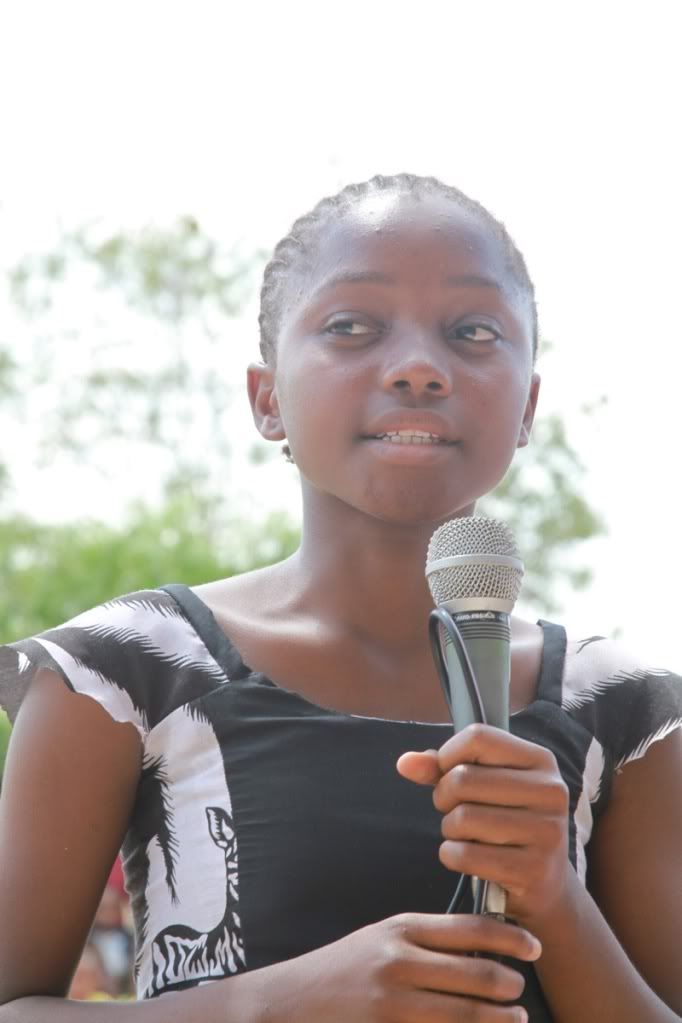 |
| Kenyan girl recites a poem about AIDS |
It was quite a celebration all in all. We had many adventures getting ready for it – 3 in particular we won’t soon forget.
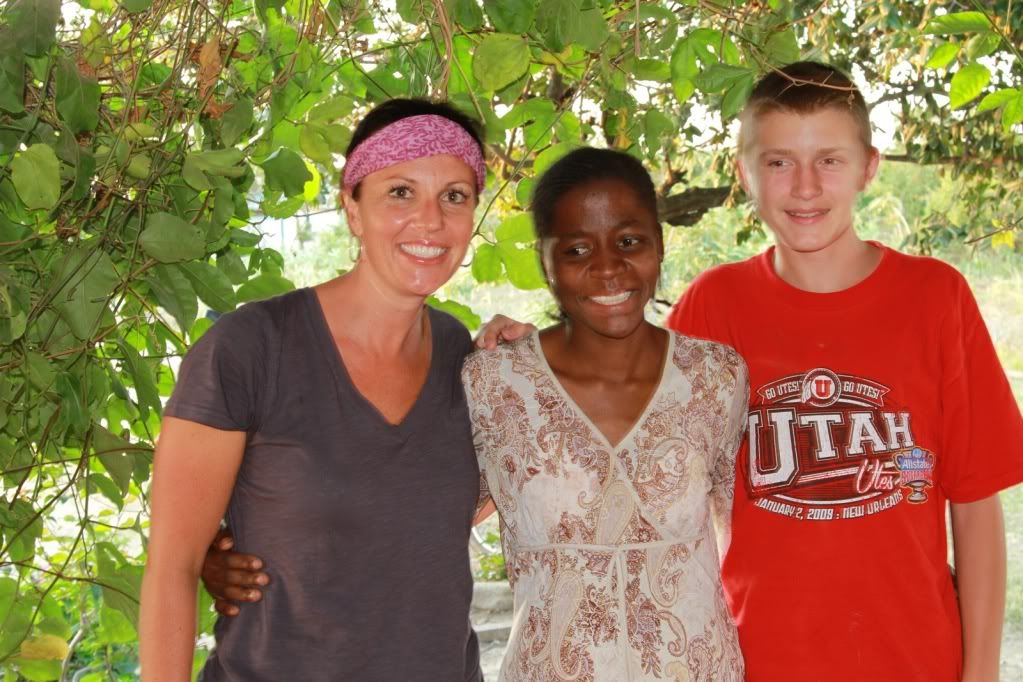 |
| Purity with her sponsor Kim, and Abel, Kim's nephew |
1. Purity is a young woman who is being sponsored through Koins to attend the university in Nairobi. Since her sponsor, Kim, was with us, Bret flew Purity in to meet her and attend the Gona celebration. We weren’t really surprised that she had never been on an airplane before and it had obviously made her quite nervous. We were surprised, however, that she had never been to Gona before. Purity was raised in the village of Mnyenzeni where family still lives. Mnyenzeni is the village where Koins has built its “headquarters”, kitchen and shop. It was from Mnyenzeni to Gona that the half marathon had been run. Do the math….Gona is only a half marathon away from Mnyenzeni and yet this girl had never been that far from home! There’s even a short cut if you’re not driving but for some reason – lack of curiosity, lack of need, lack of energy…whatever – this was the first time Purity had been the 13 miles away from home to the village of Gona.
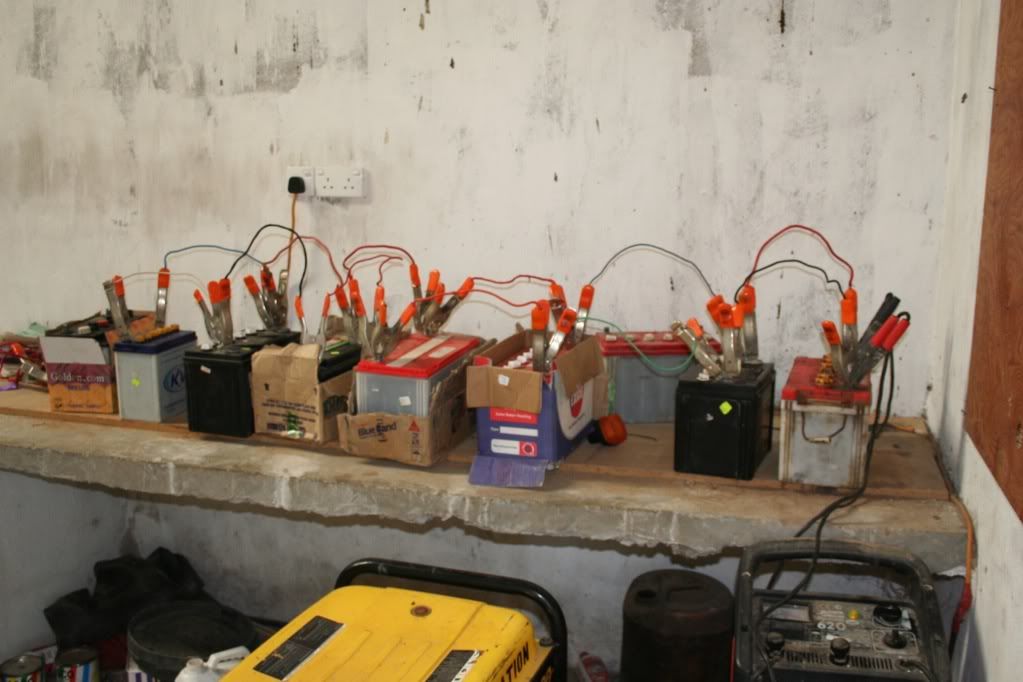 |
| Car batteries are used to charge cell phones when no electricity is available |
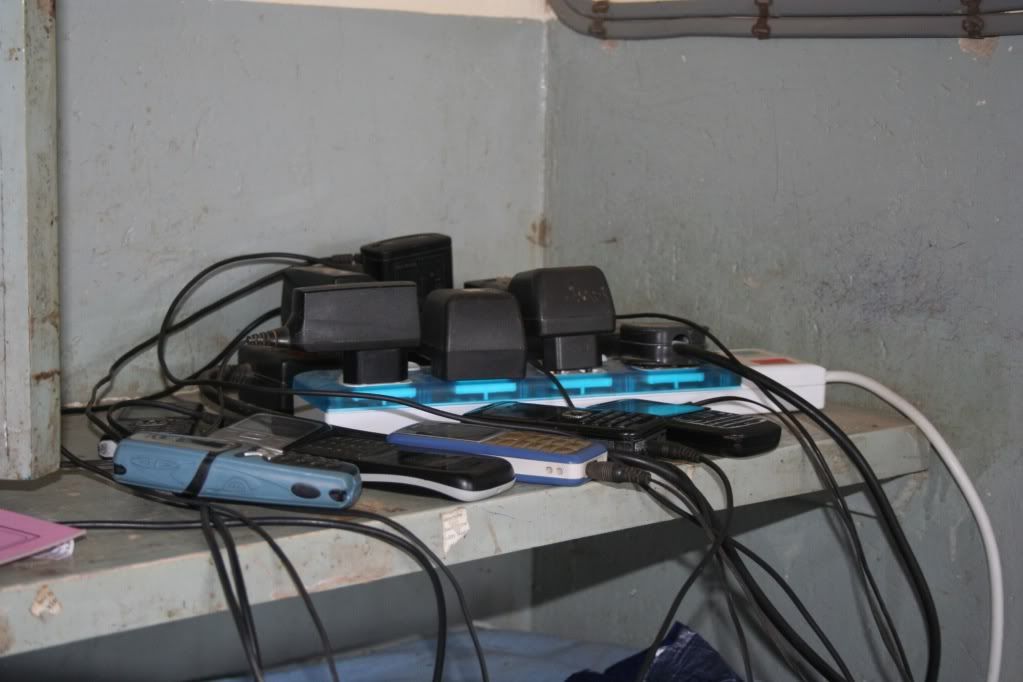 |
| Cell phone charging is a Koins microbusiness |
2. There is a strange phenomenon there. You can be watching a woman take a pan off the fire using her kanga as a hot pad, thinking you’re in the stone age, and her cell phone will ring! Tons of people have cell phones and it’s quite the status symbol. All of the Kenyans on the Koins staff live by their phones and Eliud had his in his pocket while we were painting the Gona school. Well, nature called but forgot to leave a message that he ought to take the phone out of his pocket before he entered the latrine. Sure enough, his phone went down the latrine and he was beside himself!! He was frantically dashing about, looking for something to retrieve it with. REALLY? Would you believe he finally got a teacher to reach down and haul it up?? Surprise….it didn’t work! After all that, they had to get him a new phone. That really stinks!
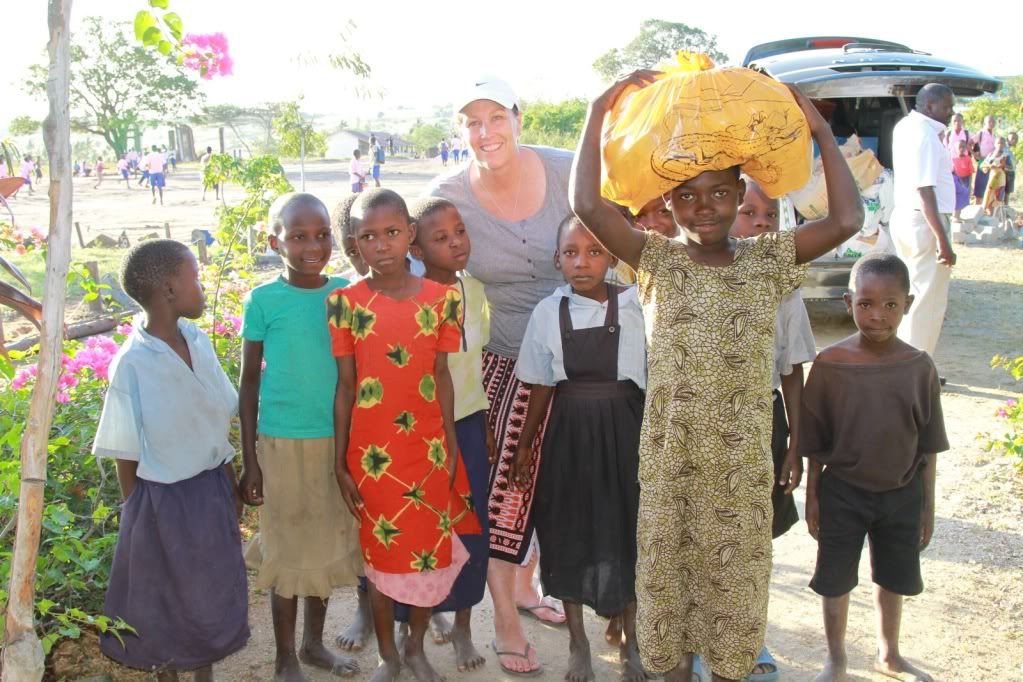 |
|
3. The most tender moment was the day a tiny little woman showed up to see Cindy. There is another phenomenon there. If you need something to happen you just say it out loud and it happens. Well, Cindy had said out loud that she wanted to meet the mother of the little boy who had died under the tree the summer before. Sure enough, the woman showed up at the school the day we were painting and Cindy got a chance to visit with her. She was able to tell this lovely, weathered, miniature of a woman that she was so sorry her son had died and that she had thought about her all year long. She told her of the children in her school class in America who brought their money and went without parties (she would have no idea what a party was) so that they could buy a microscope to put in the dispensary her son had tried to reach. She told her that even though he could not be saved, because of him, others would live. It was a sacred time and one I’ll never forget. You could see the relief on Cindy’s face that she had finally come full circle with this mother and her story, and that she had finally been able to let her know that her suffering DID matter and that her son’s death was not taken in stride. At the end of their visit, Cindy gave the woman a basket filled with food and other things she might need. It was large and heavy and the woman was so grateful. Not knowing how far the woman was from home, some of us started looking around for a van to drive her but before we even had a chance to try, she had hoisted the heavy load up onto her head and turned towards home. She was a vision of strength in so many ways.
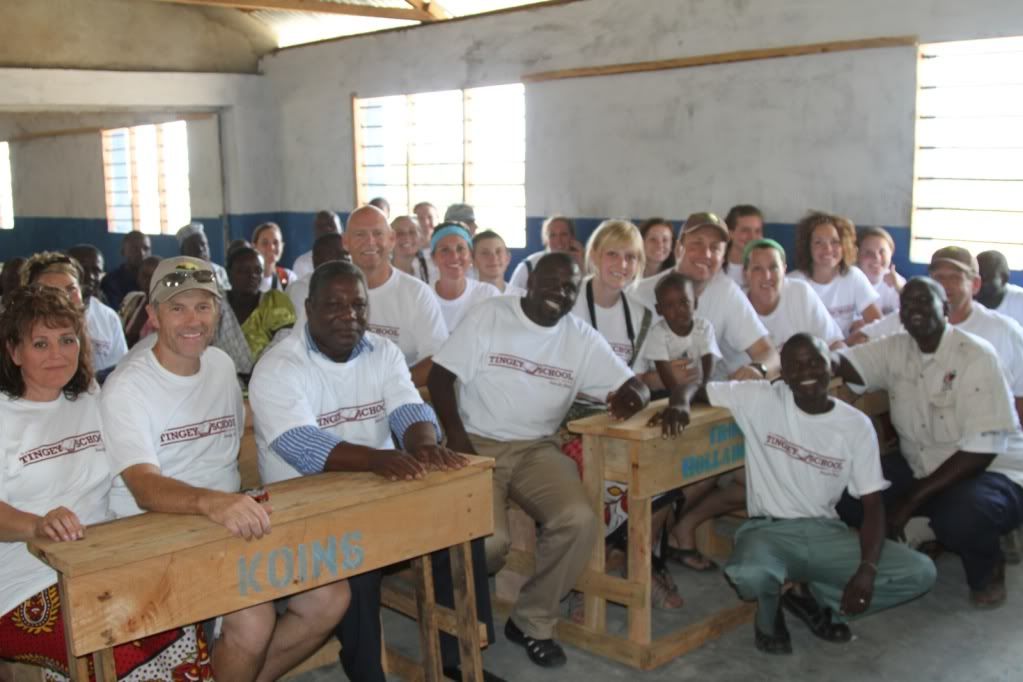 |
| The Koins group in new desks in the new Gona classroom |
____________________________________________
The story of Gona is a true Koins for Kenya success story. Tragedy was witnessed, an opportunity was seized, determination and effort were put forth, and great rewards were experienced by all, both those who gave and those who received. Not only were the Tingey's able to fund the classrooms at Gona, but they raised enough money to build latrines and a new cistern, desks and teacher tables.
Koins now has the challenge to fund a similar project for the community of Bofu, who have raised their 10% and given that contribution to Koins. We hope to have a similar celebration at Bofu during the summer of 2012.
If you are interested in contributing to Koins projects, you can be assured that 100% of your donation goes directly to the projects in Kenya. You can make a one time or monthly contribution safely and simply
here.
Asante sana,
IVL
